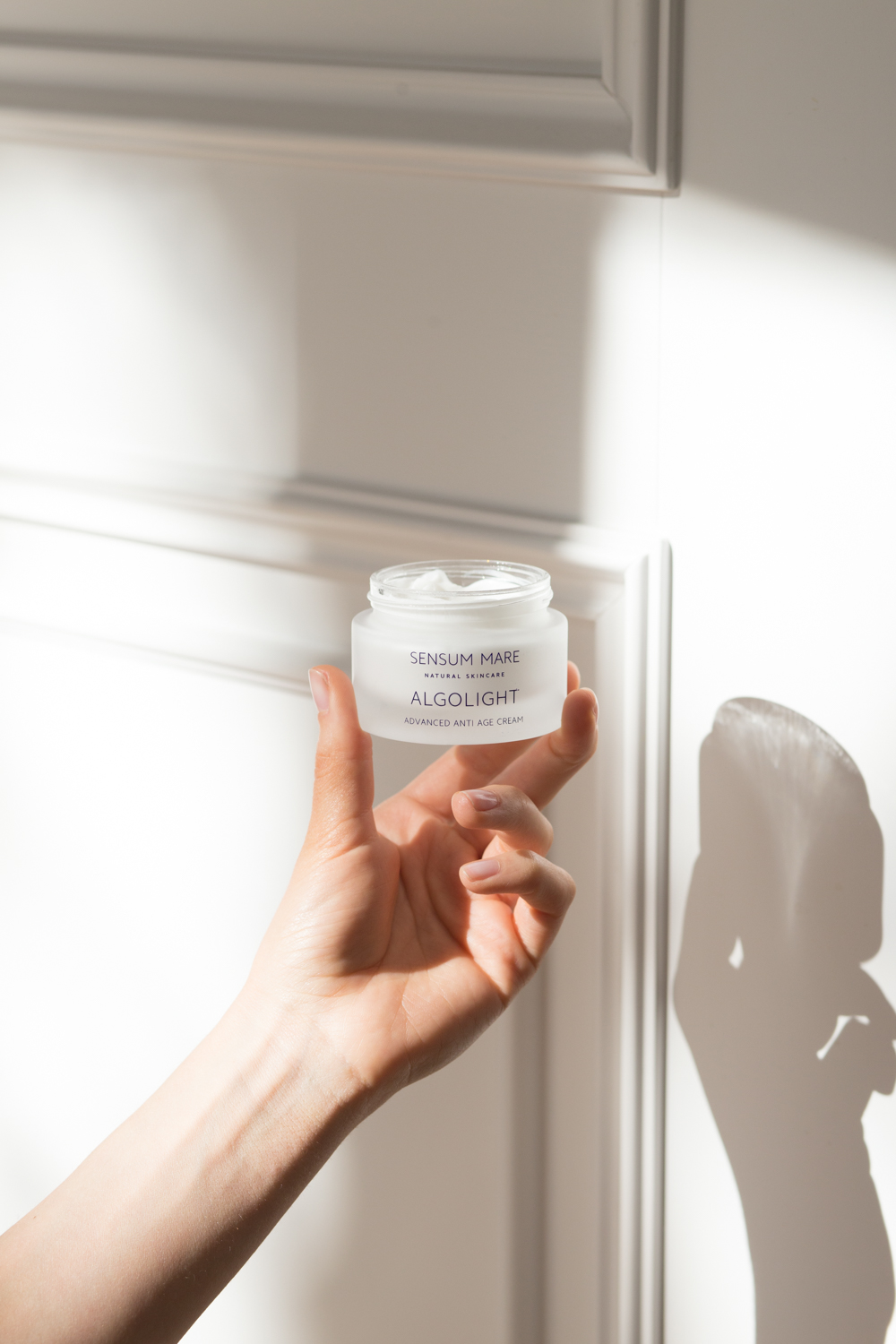
Skłamałabym twierdząc, że w ostatnich tygodniach nic się u mnie nie działo, a czas mijał błogo i spokojnie. Po pięciu latach prowadzenia MLE Collection zdecydowałyśmy się w końcu na duży krok wprzód, i to w niepewnych czasach epidemii. Wszystkie przygotowania do "startu" pochłonęły sporo czasu i nerwów, ale jesteśmy już na ostatniej prostej. Nie będę też ukrywać, że duże emocje w mojej rodzinie budzą wybory – dysputom w ostatnich tygodniach nie ma końca i czuć w powietrzu mobilizację ;). A skoro już mowa o rodzinie – w czerwcu wrócił też do nas mój tata, który przez ostatnie miesiące był "uwięziony" w Brukseli – powitanie pochłonęło sporo chusteczek ;). Na zdjęciach zobaczycie jednak przede wszystkim moją codzienną rutynę w roli mamy – bo mimo wyzwań, zmian i dziwnych zdarzeń właściwe proporcje muszą być zachowane (a odpowiednia liczba kilogramów truskawek zjedzona ;)).
 W czerwcu sporo czasu poświęciłam swojej drugiej firmie – MLE Collection. Przez pandemię znacznie trudniej było mi realizować wszystkie promocyjne działania, tym bardziej, że do samego końca nie miałyśmy pewności czy dane produkty wejdą do sprzedaży. W końcu udało się zebrać wszystkie modele sukienek i wyruszyć w plener, wcześniej trzeba jednak było zaplanować scenografię i wszystko skrupulatnie zapakować.
W czerwcu sporo czasu poświęciłam swojej drugiej firmie – MLE Collection. Przez pandemię znacznie trudniej było mi realizować wszystkie promocyjne działania, tym bardziej, że do samego końca nie miałyśmy pewności czy dane produkty wejdą do sprzedaży. W końcu udało się zebrać wszystkie modele sukienek i wyruszyć w plener, wcześniej trzeba jednak było zaplanować scenografię i wszystko skrupulatnie zapakować.
 1. Wielkie przygotowania do sesji. // 2. Stadniny przy Pałacu Ciekocinko. // 3. Chwila przerwy na kawę. // 4. Wszystkie zdjęcia i więcej zbliżeń na nasze flagowe produkty znajdziecie w tym i tym wpisie. //
1. Wielkie przygotowania do sesji. // 2. Stadniny przy Pałacu Ciekocinko. // 3. Chwila przerwy na kawę. // 4. Wszystkie zdjęcia i więcej zbliżeń na nasze flagowe produkty znajdziecie w tym i tym wpisie. //
 Sukienka Kalgoorlie raz jeszcze.
Sukienka Kalgoorlie raz jeszcze. Wieloletni staż u Zosi jak widać bardzo się przydaje :D.
Wieloletni staż u Zosi jak widać bardzo się przydaje :D.
 Takie zdjęcia to ja rozumiem!
Takie zdjęcia to ja rozumiem! Tak zwane "klamoty".
Tak zwane "klamoty". 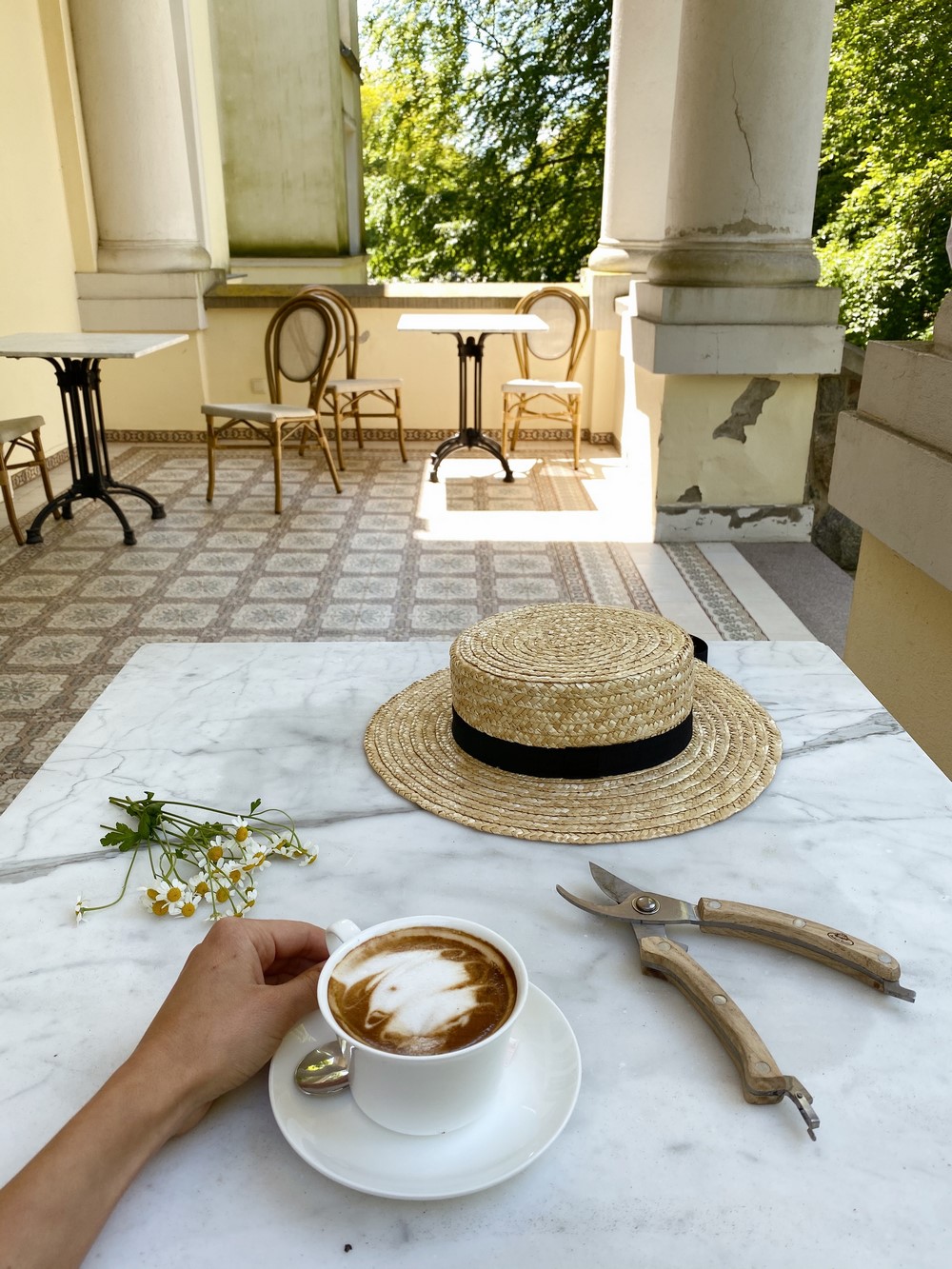 Widok z tylnego tarasu pałacu.
Widok z tylnego tarasu pałacu.  Ale MLE czynne jest całą dobę! :)
Ale MLE czynne jest całą dobę! :) 1. Poarnki po burzy. W ogrodzie pachnie mokrą trawą, w dłoni trzymam kubek gorącej kawy, a Portos właśnie zaczął kopać błotną dziurę przy mojej ukochanej dalii. // 2. W komplecie najweselej! mój ulubiony i najdyskretniejszy fotograf na świecie na drugim planie. // 3. Czasem warto nie wierzyć prognozom pogody – miała być burza, a jest pełna lampa. Na zdjęciach moje Orłowo. Piszę „moje” bo kiedyś przez chwilę tu mieszkałam, a kto raz pokocha to miejsce już zawsze wraca do niego, jak do domu. // 4. No to jazda! Domowe biuro równa się domowy plac zabaw. //
1. Poarnki po burzy. W ogrodzie pachnie mokrą trawą, w dłoni trzymam kubek gorącej kawy, a Portos właśnie zaczął kopać błotną dziurę przy mojej ukochanej dalii. // 2. W komplecie najweselej! mój ulubiony i najdyskretniejszy fotograf na świecie na drugim planie. // 3. Czasem warto nie wierzyć prognozom pogody – miała być burza, a jest pełna lampa. Na zdjęciach moje Orłowo. Piszę „moje” bo kiedyś przez chwilę tu mieszkałam, a kto raz pokocha to miejsce już zawsze wraca do niego, jak do domu. // 4. No to jazda! Domowe biuro równa się domowy plac zabaw. // Przy orłowskim molo.
Przy orłowskim molo.  Czytałyście artykuł o wakacjach w czasie pandemii? Sama nie wiem dlaczego te teksty na blogu wychodzą mi takie obszerne – może nie lubię, gdy ciekawe tematy są traktowane po łebkach? W każdym razie, artykuły na blogu nie blakną po pierwszym akapicie, nie trzeba wykupywać do nich dostępu ani rocznych prenumerat – zapraszam więc wszystkich do czytania bez wyjątku. W artykule pojawia się też mini recenzja mąk bezglutenowych i przepis dla perfekcyjnej niedorajdy kulinarnej.
Czytałyście artykuł o wakacjach w czasie pandemii? Sama nie wiem dlaczego te teksty na blogu wychodzą mi takie obszerne – może nie lubię, gdy ciekawe tematy są traktowane po łebkach? W każdym razie, artykuły na blogu nie blakną po pierwszym akapicie, nie trzeba wykupywać do nich dostępu ani rocznych prenumerat – zapraszam więc wszystkich do czytania bez wyjątku. W artykule pojawia się też mini recenzja mąk bezglutenowych i przepis dla perfekcyjnej niedorajdy kulinarnej. 1. Kasztanowa, migdałowa, jaglana… mąki do wyboru, do koloru. Wszystko znalezione w moim ulubionym sklepie ze zdrową żywnością – Jadłosferze. // 2. Szukamy książeczek na popołudniowe czytanie. // 3. Sto dni czekania na dziadka – bardzo tęskniliśmy! // 4. Nasze typowe śniadanie w ostatnich dniach. //
1. Kasztanowa, migdałowa, jaglana… mąki do wyboru, do koloru. Wszystko znalezione w moim ulubionym sklepie ze zdrową żywnością – Jadłosferze. // 2. Szukamy książeczek na popołudniowe czytanie. // 3. Sto dni czekania na dziadka – bardzo tęskniliśmy! // 4. Nasze typowe śniadanie w ostatnich dniach. //
 Nie musi być wykwitnie…
Nie musi być wykwitnie…
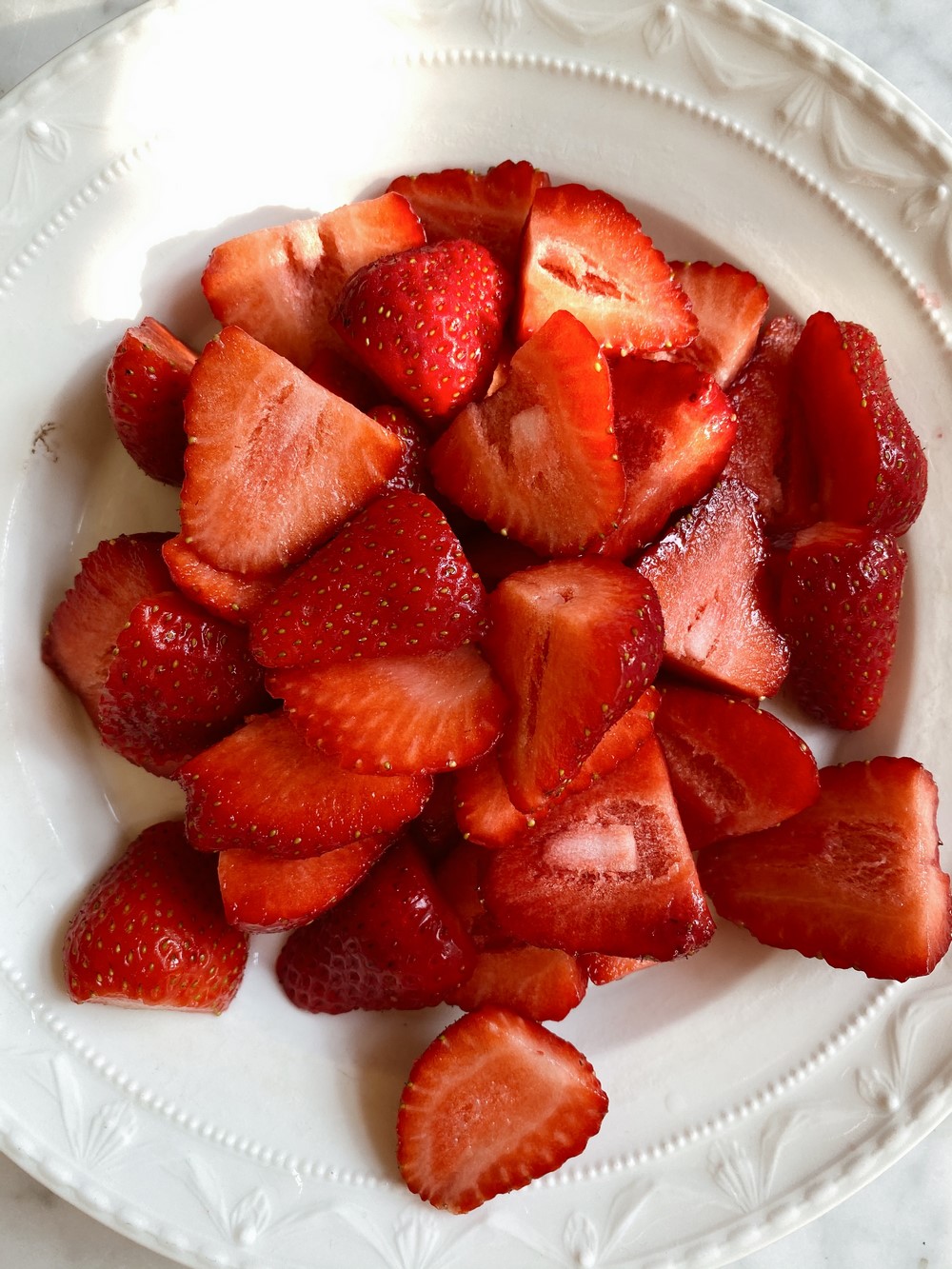 … byleby truskawek nie zabrakło!
… byleby truskawek nie zabrakło! 1. Pachnący jaśmin z ogrodu mojej mamy. // 2. Gdy wszyscy goście, współpracowniczki, kurierzy i nie wiadomo kto jeszcze zamkną za sobą drzwi i w końcu mogę zjeść tę ostatnią babeczkę kajmakową w spokoju. // 3. Wersja dla bobasa i wersja dla mamy. // 4. Grunt, żeby bałagan był kolorystycznie uporządkowany :D. //
1. Pachnący jaśmin z ogrodu mojej mamy. // 2. Gdy wszyscy goście, współpracowniczki, kurierzy i nie wiadomo kto jeszcze zamkną za sobą drzwi i w końcu mogę zjeść tę ostatnią babeczkę kajmakową w spokoju. // 3. Wersja dla bobasa i wersja dla mamy. // 4. Grunt, żeby bałagan był kolorystycznie uporządkowany :D. // Wszystkie książeczki przeczytane trzy razy, myszki położone do łóżeczek, szuflada z kosmetykami mamy "posprzątana". Co tu robić gdy pada? Jeśli z kolei Wy chciałybyście przeznaczyć pięć minut na coś konstruktywnego, to chciałabym Was zaprosić do udziału w badaniu „Uczucia w słowach”. Jeśli interesujecie się rozwojem osobistym i macie trochę czasu, aby zaangażować się w trening kompetencji emocjonalnych i pogłębienie naukowego rozumienia emocji, to myślę, że warto spróbować i dołączyć do badania. Autorką treningu jest Profesor Ewa Trzebińska, która stworzyła hasło „piękna emocja” i jest to hasło przewodnie tego projektu. Zachęcam Was, aby dołączyć do badania na komputerze/laptopie, a jeśli to niemożliwe to możecie je zrobić również na telefonie (pamiętajcie o możliwości obrócenia ekranu).
Wszystkie książeczki przeczytane trzy razy, myszki położone do łóżeczek, szuflada z kosmetykami mamy "posprzątana". Co tu robić gdy pada? Jeśli z kolei Wy chciałybyście przeznaczyć pięć minut na coś konstruktywnego, to chciałabym Was zaprosić do udziału w badaniu „Uczucia w słowach”. Jeśli interesujecie się rozwojem osobistym i macie trochę czasu, aby zaangażować się w trening kompetencji emocjonalnych i pogłębienie naukowego rozumienia emocji, to myślę, że warto spróbować i dołączyć do badania. Autorką treningu jest Profesor Ewa Trzebińska, która stworzyła hasło „piękna emocja” i jest to hasło przewodnie tego projektu. Zachęcam Was, aby dołączyć do badania na komputerze/laptopie, a jeśli to niemożliwe to możecie je zrobić również na telefonie (pamiętajcie o możliwości obrócenia ekranu).
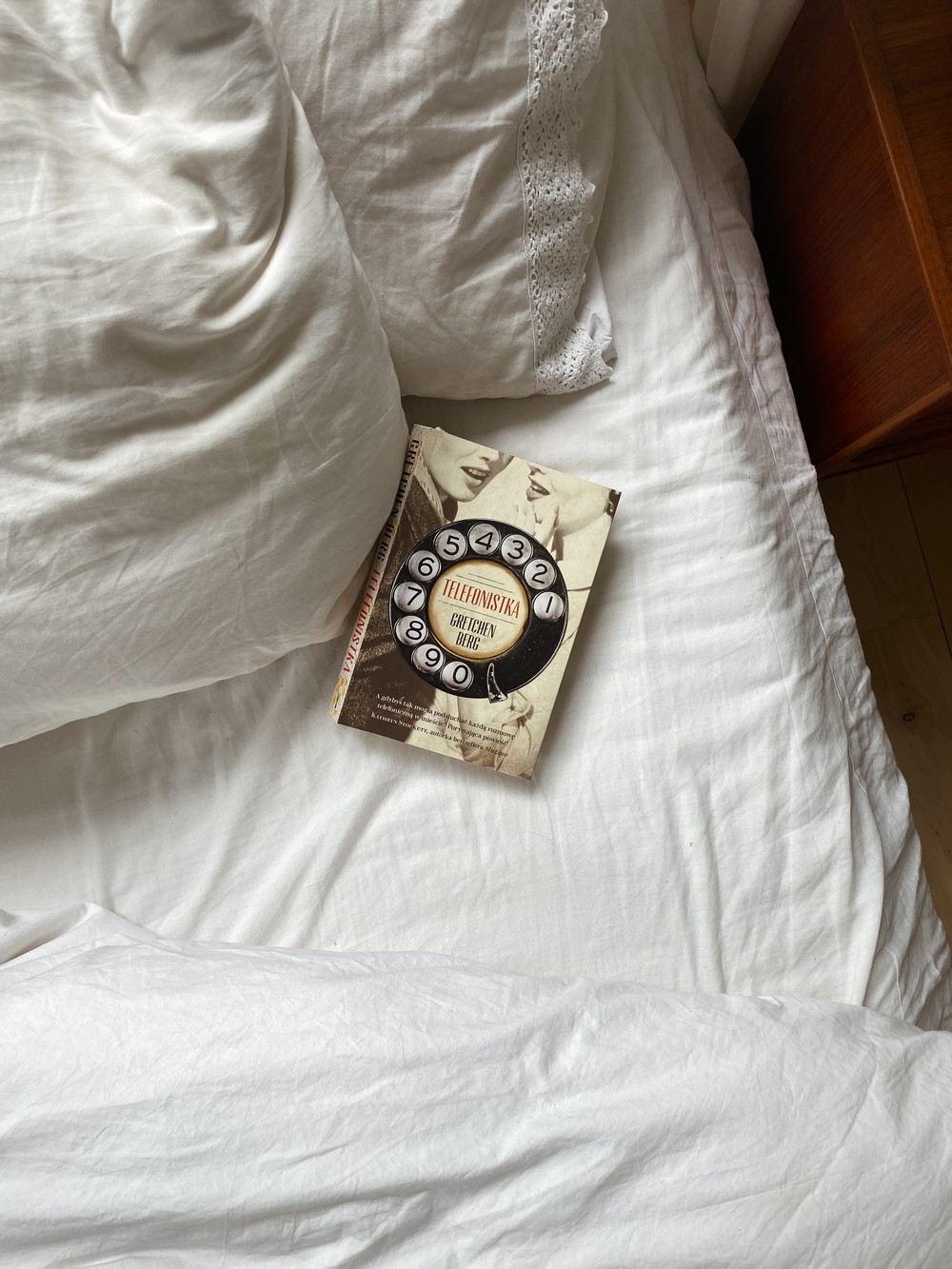 "Telefonistka" autorstwa Berg Gretchen to coś w rodzaju kobiecego kryminału. Akcja tej książki toczy się w latach pięćdziesiątych w małym amerykańskim miasteczku. Bohaterka powieści zatrudniona jest w centrali telefonicznej i pomimo zakazu, z ciekawości często podsłuchuje rozmowy. Pewnego dnia podsłuchała plotkę, która dotyczy jej rodziny i za wszelką cenę próbuje zweryfikować szokujące informacje. Jak to jednak bywa w niewielkich miasteczkach – jedna tajemnica ciągnie za sobą kolejną.
"Telefonistka" autorstwa Berg Gretchen to coś w rodzaju kobiecego kryminału. Akcja tej książki toczy się w latach pięćdziesiątych w małym amerykańskim miasteczku. Bohaterka powieści zatrudniona jest w centrali telefonicznej i pomimo zakazu, z ciekawości często podsłuchuje rozmowy. Pewnego dnia podsłuchała plotkę, która dotyczy jej rodziny i za wszelką cenę próbuje zweryfikować szokujące informacje. Jak to jednak bywa w niewielkich miasteczkach – jedna tajemnica ciągnie za sobą kolejną.  Takie czekanie na słońce nie jest najgorsze…
Takie czekanie na słońce nie jest najgorsze… Hmm… kiciusia Portos jest w stanie wypatrzeć z trzystu metrów, ale akurat tego jegomościa zupełnie nie zauważał. Czy ktoś tu czuje zapach tchórza? ;) Takie widoki w naszej okolicy nie są rzadkością. Mieszkamy blisko lasu i często zdarza się, że otwierając rankiem drzwi na zewnątrz kamienicy prawie mijamy się z dzikiem (czasem stoi tak, jakby chciał powiedzieć, że domofon nie działa i dlatego czeka pod drzwiami, aż jakiś miły sąsiad go wpuści). Niemniej jednak ostrożności nigdy za wiele – w takiej sytuacji powolutku się wycofujemy.
Hmm… kiciusia Portos jest w stanie wypatrzeć z trzystu metrów, ale akurat tego jegomościa zupełnie nie zauważał. Czy ktoś tu czuje zapach tchórza? ;) Takie widoki w naszej okolicy nie są rzadkością. Mieszkamy blisko lasu i często zdarza się, że otwierając rankiem drzwi na zewnątrz kamienicy prawie mijamy się z dzikiem (czasem stoi tak, jakby chciał powiedzieć, że domofon nie działa i dlatego czeka pod drzwiami, aż jakiś miły sąsiad go wpuści). Niemniej jednak ostrożności nigdy za wiele – w takiej sytuacji powolutku się wycofujemy.  Po raz kolejny odwiedziłam showroom Iconic Design w Gdańsku. I tym razem wcale nie chodziło o kanapę :). W ciągu najbliższych dni będę mieć dla Was naprawdę dużą niespodziankę i aż przebieram nogami, aby móc Wam o niej opowiedzieć.
Po raz kolejny odwiedziłam showroom Iconic Design w Gdańsku. I tym razem wcale nie chodziło o kanapę :). W ciągu najbliższych dni będę mieć dla Was naprawdę dużą niespodziankę i aż przebieram nogami, aby móc Wam o niej opowiedzieć.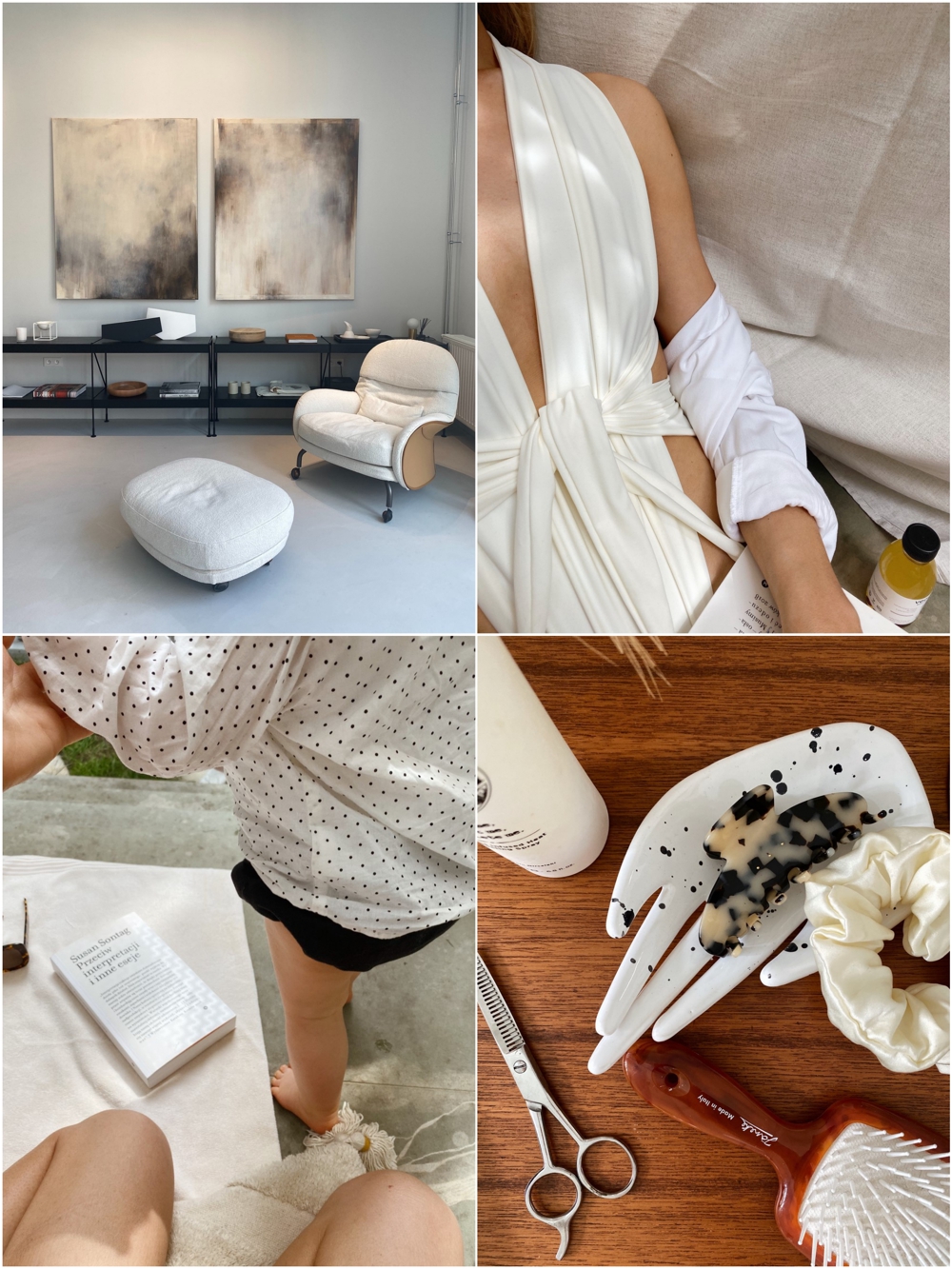 1. Poproszę o spakowanie tego pokoju i wysłanie na mój adres! // 2. O kostium pytało wiele z Was – to model od Kornelii Rataj. // 3. Praca na świeżym powietrzu i mój mały pomocnik. // 4. Wiele z Was zasypało mnie wiadomościami o tym jak dbam o włosy przy małym dziecku oraz jak podcinam grzywkę. Jeśli przeoczyłyście ten wątek to na moim Instagramie znajdziecie go w zapisanych relacjach. //
1. Poproszę o spakowanie tego pokoju i wysłanie na mój adres! // 2. O kostium pytało wiele z Was – to model od Kornelii Rataj. // 3. Praca na świeżym powietrzu i mój mały pomocnik. // 4. Wiele z Was zasypało mnie wiadomościami o tym jak dbam o włosy przy małym dziecku oraz jak podcinam grzywkę. Jeśli przeoczyłyście ten wątek to na moim Instagramie znajdziecie go w zapisanych relacjach. // Kiedy jest 28 stopni, a ty nadal jesteś blada jak ściana.
Kiedy jest 28 stopni, a ty nadal jesteś blada jak ściana. 
Najpiękniejsze bukiety tylko w Narcyzie!
 No i znów mamy niebieskie niebo! Korty w Gdyni to idealne miejsce dla "rekreacyjnych tenisistów" ;).
No i znów mamy niebieskie niebo! Korty w Gdyni to idealne miejsce dla "rekreacyjnych tenisistów" ;).  Jak dobrze widzieć tę dwójkę razem! Przez pandemię moi rodzice zostali rozdzieleni na rekordowo długi czas. Mama na cztery dni przed zamknięciem granic wróciła do Polski, tata niestety już nie zdążył. Ale podobno nie ma tego złego – nadrabiamy stracony czas.
Jak dobrze widzieć tę dwójkę razem! Przez pandemię moi rodzice zostali rozdzieleni na rekordowo długi czas. Mama na cztery dni przed zamknięciem granic wróciła do Polski, tata niestety już nie zdążył. Ale podobno nie ma tego złego – nadrabiamy stracony czas.
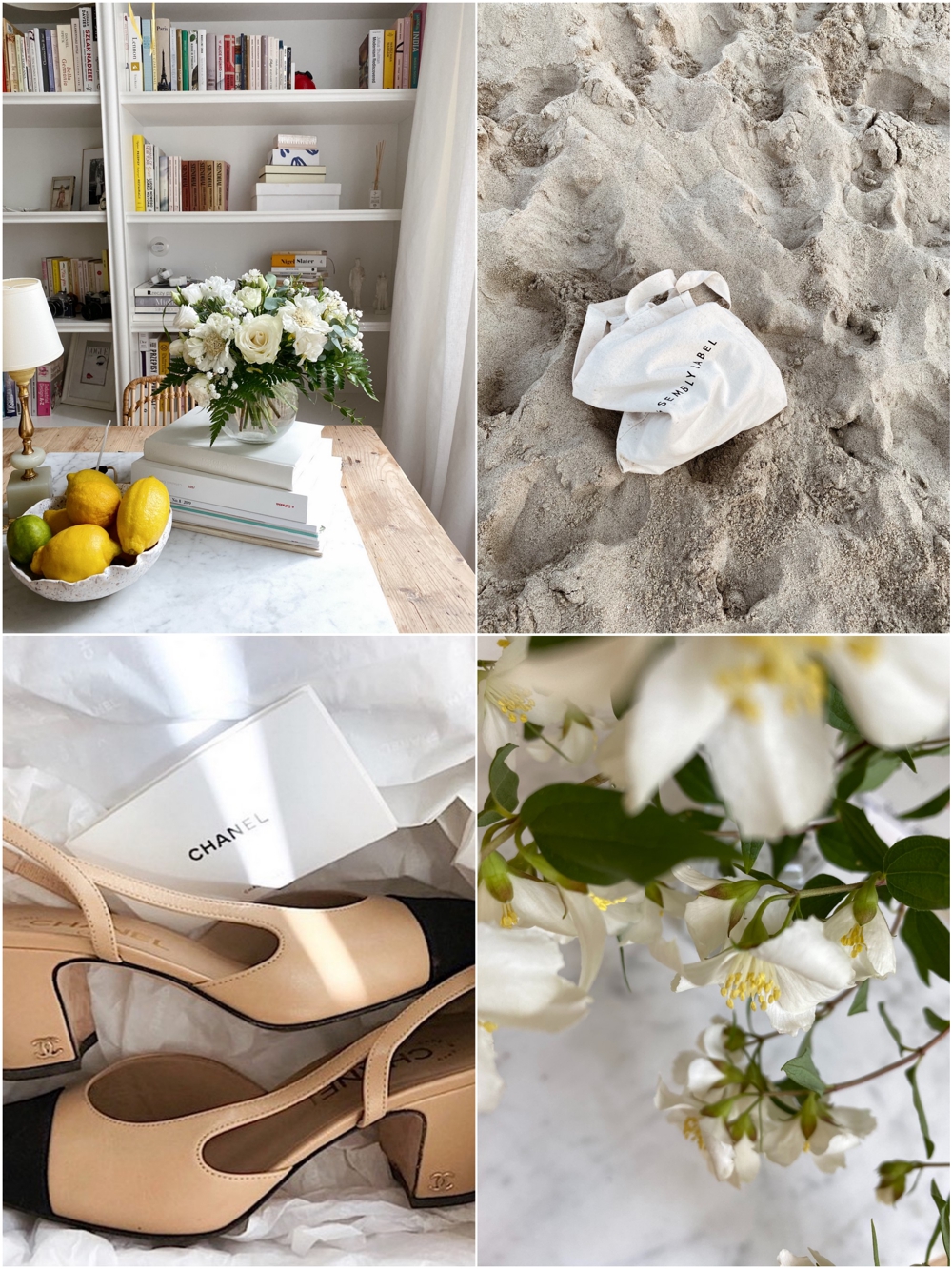 1. Gdy po dwunastu latach ktoś nadal daje "kwiaty bez okazji". // 2. Rzucam torbę i biegnę do wody! // 3. Porządki w szafie. Jak się pewnie domyślacie, te buty zostają ze mną! // 4. Na miły sen. //
1. Gdy po dwunastu latach ktoś nadal daje "kwiaty bez okazji". // 2. Rzucam torbę i biegnę do wody! // 3. Porządki w szafie. Jak się pewnie domyślacie, te buty zostają ze mną! // 4. Na miły sen. //
 W ostatnim "Look'u" pokazywałam Wam wersję bez rękawów, natomiast ta sukienka sprawdzi się w chłodniejsze dni – piękny dekolt, obniżona linia ramion i pasek podkreślający talię. Ten model pochodzi ze sklepu Nudyess.
W ostatnim "Look'u" pokazywałam Wam wersję bez rękawów, natomiast ta sukienka sprawdzi się w chłodniejsze dni – piękny dekolt, obniżona linia ramion i pasek podkreślający talię. Ten model pochodzi ze sklepu Nudyess.
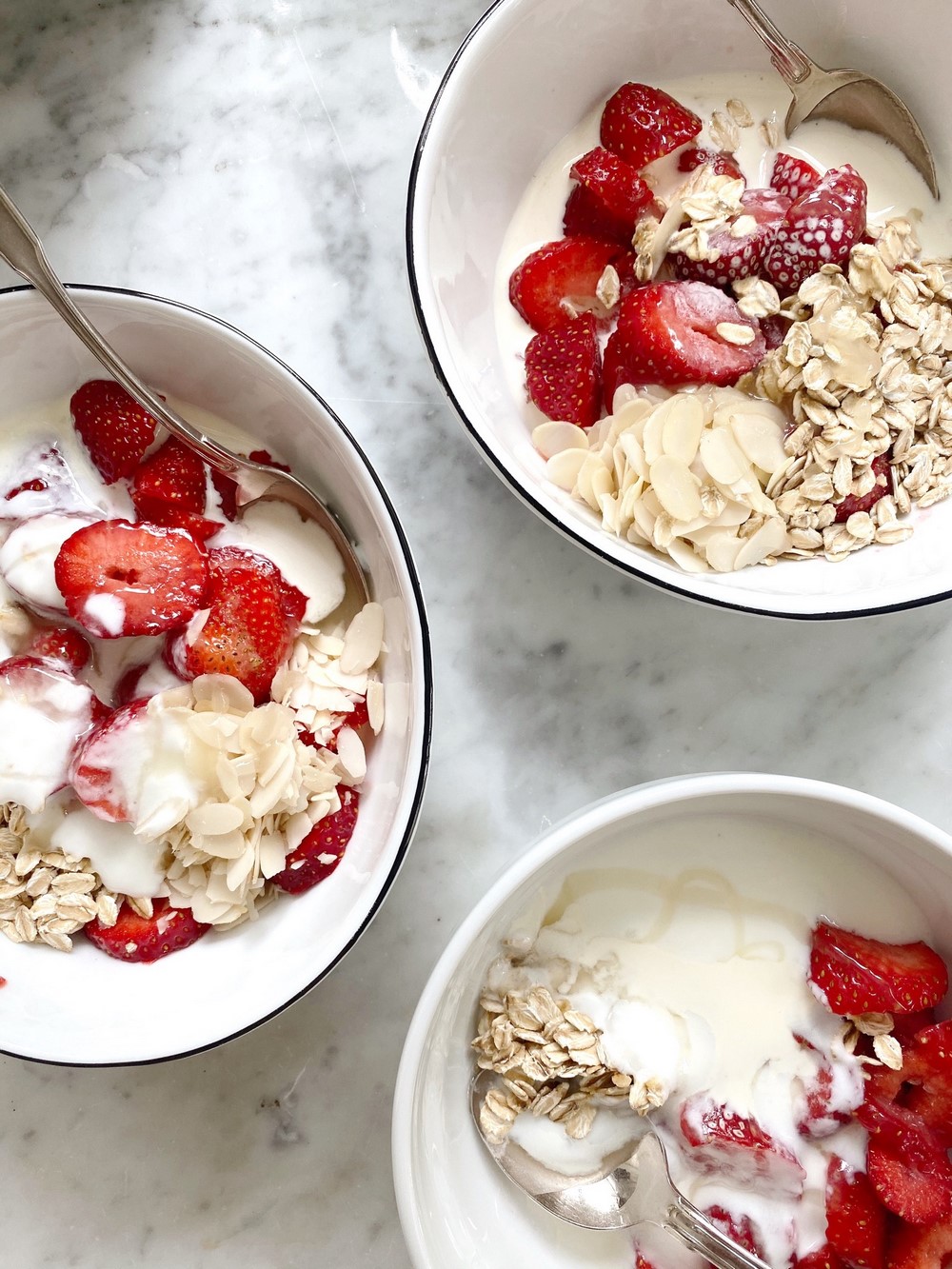 Bo dobrego nigdy za wiele! Bezglutenowe płatki owsiane to u mnie produkt pierwszej potrzeby. Znajdziecie je w Jadłosferze.
Bo dobrego nigdy za wiele! Bezglutenowe płatki owsiane to u mnie produkt pierwszej potrzeby. Znajdziecie je w Jadłosferze. 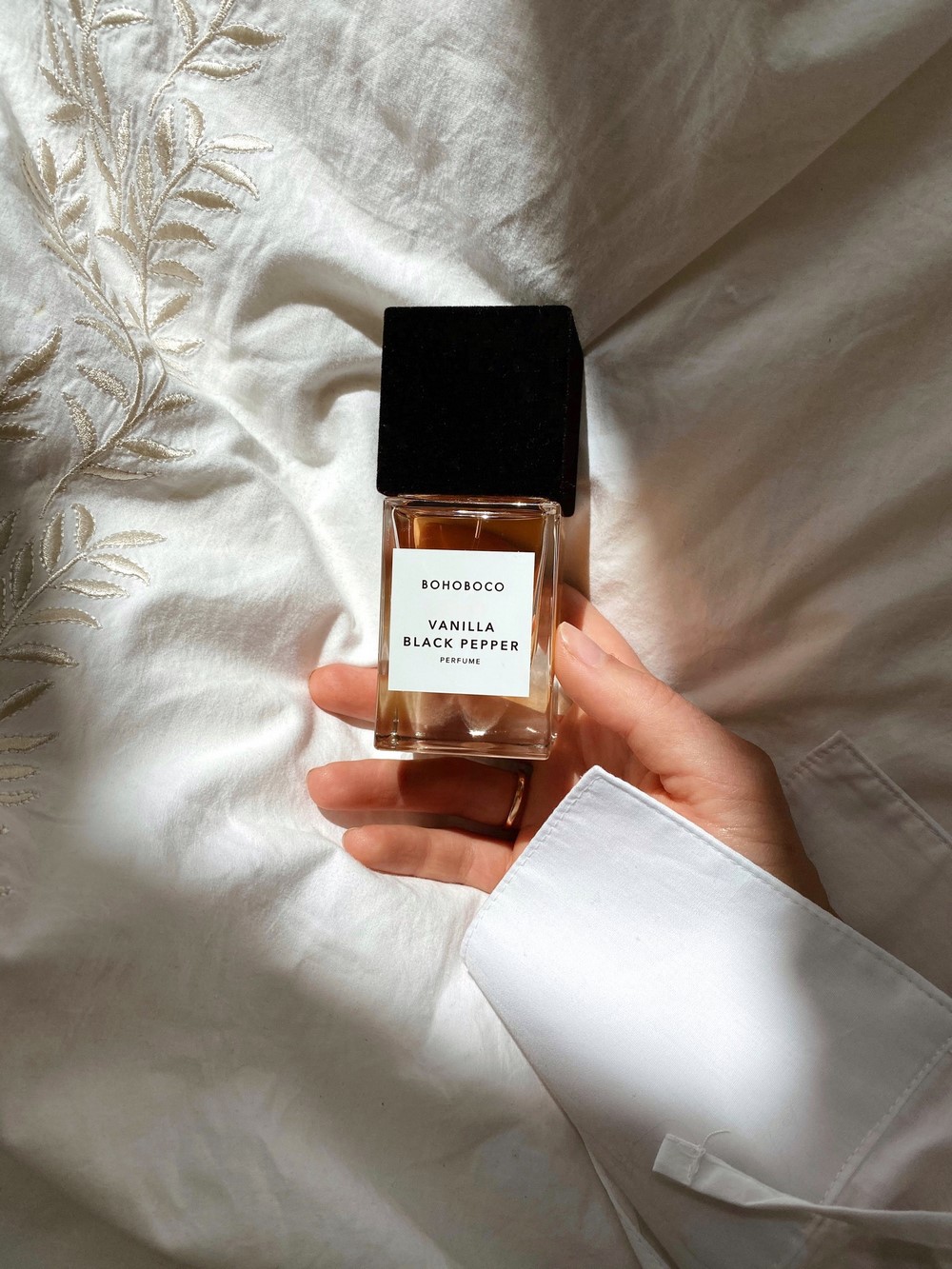 Te perfumy w niczym nie odstępują tym najznakomitszym. Polska marka BOHOBOCO wypuściła kolekcję ośmiu niszowych zapachów unisex i od razu odniosła gigantyczny sukces – doczekała się nawet nominacji w prestiżowym konkursie The Fragrance Foundation UK Awards, określanym "Oskarami" branży perfum. Ja zakochałam się w dwóch zapachach: Vanilla Black Pepper oraz Olibanum Gardenia. Na koniec dodam tylko, że butelki są prawdziwą ozdobą łazienkowego blatu.
Te perfumy w niczym nie odstępują tym najznakomitszym. Polska marka BOHOBOCO wypuściła kolekcję ośmiu niszowych zapachów unisex i od razu odniosła gigantyczny sukces – doczekała się nawet nominacji w prestiżowym konkursie The Fragrance Foundation UK Awards, określanym "Oskarami" branży perfum. Ja zakochałam się w dwóch zapachach: Vanilla Black Pepper oraz Olibanum Gardenia. Na koniec dodam tylko, że butelki są prawdziwą ozdobą łazienkowego blatu.  Tłoczno w lokalach wyborczych (i to było super!) i na ulicach (z tym trochę gorzej), ale tubylcy mają swoje sposoby, aby cieszyć się Tym miastem nawet w sezonie – na słynne Molo lepiej wybrać się wieczorem.
Tłoczno w lokalach wyborczych (i to było super!) i na ulicach (z tym trochę gorzej), ale tubylcy mają swoje sposoby, aby cieszyć się Tym miastem nawet w sezonie – na słynne Molo lepiej wybrać się wieczorem. Takie upominki od mojej kochanej babci!
Takie upominki od mojej kochanej babci!  Zabieram trochę tej łąki do domu.
Zabieram trochę tej łąki do domu.
 Moja para rzezimieszków…
Moja para rzezimieszków…
 Czekamy na zachód w Jastrzębiej…
Czekamy na zachód w Jastrzębiej…
I kojący widok na koniec dzisiejszej relacji. Niech lipiec będzie jeszcze piękniejszy!
* * *







 1. Ktoś zaczyna mieć już własne zdanie i odkrył, że łóżko rodziców jest najfajniejsze. // 2. I jak tu się dziwić, że malarze kochają kwiaty? // 3. Wyklejamy kolejne pamiątkowe albumy. // 4.
1. Ktoś zaczyna mieć już własne zdanie i odkrył, że łóżko rodziców jest najfajniejsze. // 2. I jak tu się dziwić, że malarze kochają kwiaty? // 3. Wyklejamy kolejne pamiątkowe albumy. // 4.  Tak było jeszcze na początku miesiąca. Spacery w maseczkach żegnam z dużą ulgą.
Tak było jeszcze na początku miesiąca. Spacery w maseczkach żegnam z dużą ulgą. 1. Chyba nigdy w historii MLE nie pracowałam nad
1. Chyba nigdy w historii MLE nie pracowałam nad 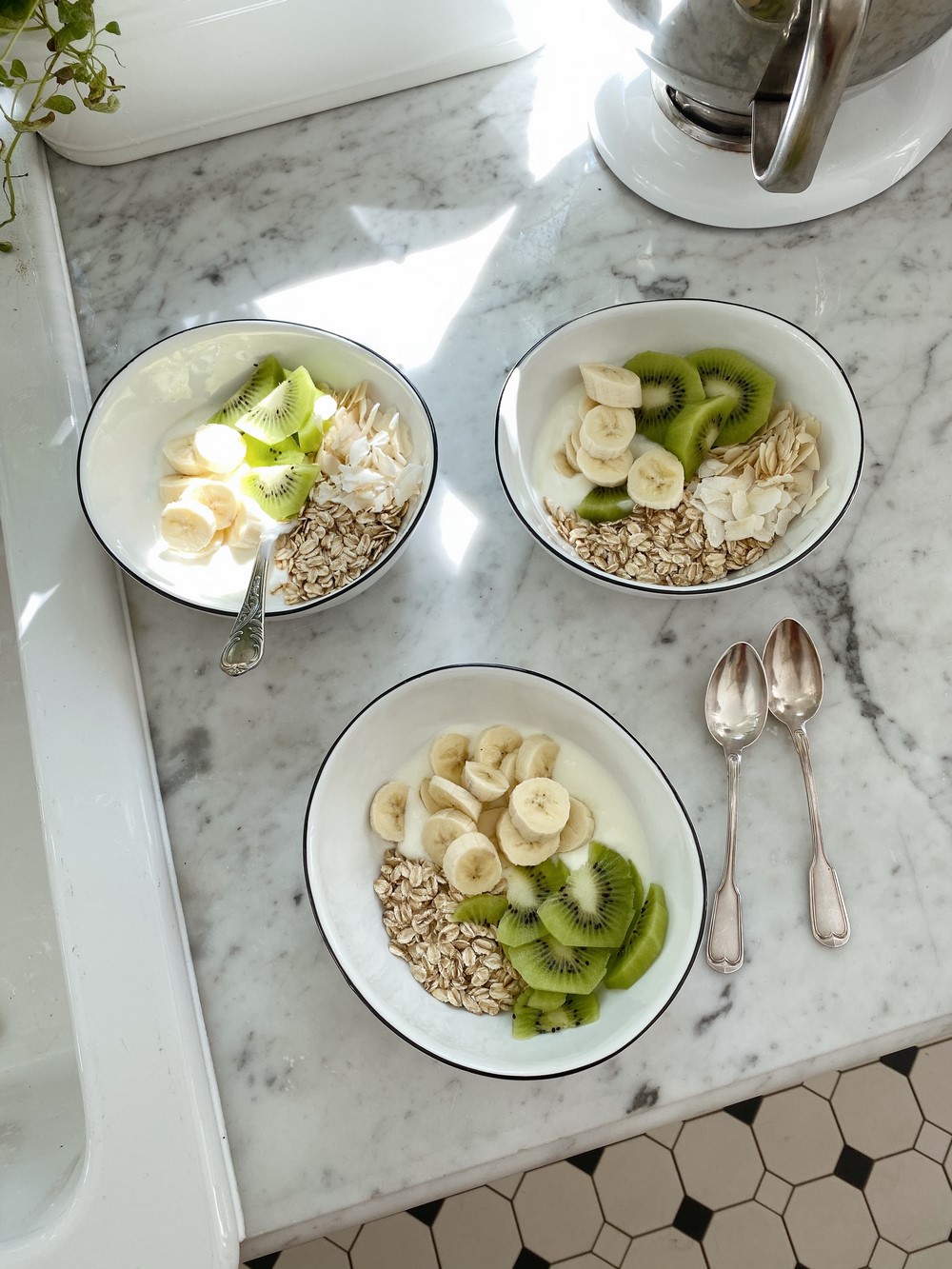 Trzy śniadania w mgnieniu oka. Dla małej opcja bez kokosu i migdałów.
Trzy śniadania w mgnieniu oka. Dla małej opcja bez kokosu i migdałów.  Nareszcie nadszedł czas, żeby te wszystkie piękne sukienki nosić na co dzień. Wygladają bardzo elegancko, ale materiał w dotyku jest wyjątkowo przyjemny – nie trzeba się obawiać, że małej królewnie będzie niewygodnie i nastąpi próba rozbierania się w trakcie wizyty u teściowej ;). Sukienki znajdziecie w ofercie polskiej marki
Nareszcie nadszedł czas, żeby te wszystkie piękne sukienki nosić na co dzień. Wygladają bardzo elegancko, ale materiał w dotyku jest wyjątkowo przyjemny – nie trzeba się obawiać, że małej królewnie będzie niewygodnie i nastąpi próba rozbierania się w trakcie wizyty u teściowej ;). Sukienki znajdziecie w ofercie polskiej marki  1. A tak prezentuje się sukienka od
1. A tak prezentuje się sukienka od  Mój ulubiony kącik w mieszkaniu.
Mój ulubiony kącik w mieszkaniu. 1. Jeśli mała królewna wybierze coś w języku Szekspira to służba służy. // 2. Pamiętacie to pyszne zielone ciasto? Zrobiło ogromną furorę! Przepis znajdziecie
1. Jeśli mała królewna wybierze coś w języku Szekspira to służba służy. // 2. Pamiętacie to pyszne zielone ciasto? Zrobiło ogromną furorę! Przepis znajdziecie  Bajki autorstwa Beatrix Potter. Stare wydania.
Bajki autorstwa Beatrix Potter. Stare wydania.  Inni, ale jednak tacy sami. Ty też jesteś ważny Porti!
Inni, ale jednak tacy sami. Ty też jesteś ważny Porti!  Maj był dla Portosa miesiącem wielkiej zmiany. Musieliśmy poszukać dla niego nowej karmy – spaniele to bardzo wrażliwe psy i wszystko wskazuje na to, że Portos nabawił się jakiejś alergii. Po długiej konsultacji zdecydowaliśmy się na tę od
Maj był dla Portosa miesiącem wielkiej zmiany. Musieliśmy poszukać dla niego nowej karmy – spaniele to bardzo wrażliwe psy i wszystko wskazuje na to, że Portos nabawił się jakiejś alergii. Po długiej konsultacji zdecydowaliśmy się na tę od 
 1. Produkty niezbędne na sesji zdjęciowej, w moim przypadku zalicza się do nich również pluszowa lama. // 2. Gdy brzdąc śpi i mamy chwilę na rozmowy we dwoje. // 3. Czy tylko ja podziwiam przekwitnięte piwonie? // 4. Ja śpię po lewej stronie, a Wy? //
1. Produkty niezbędne na sesji zdjęciowej, w moim przypadku zalicza się do nich również pluszowa lama. // 2. Gdy brzdąc śpi i mamy chwilę na rozmowy we dwoje. // 3. Czy tylko ja podziwiam przekwitnięte piwonie? // 4. Ja śpię po lewej stronie, a Wy? // Studio polowe. Zdjęcia z tego dnia znajdziecie w
Studio polowe. Zdjęcia z tego dnia znajdziecie w  1. Gdy mama chce skorzystać z łazienki… // 2. Takie miseczki z mieszaniną różnych zdrowych produktów to ostatnio moje ulubione posiłki. // 3. Domowa biblioteka. // 4. "Mamo wstawaj, przegapisz wschód słońca!". //
1. Gdy mama chce skorzystać z łazienki… // 2. Takie miseczki z mieszaniną różnych zdrowych produktów to ostatnio moje ulubione posiłki. // 3. Domowa biblioteka. // 4. "Mamo wstawaj, przegapisz wschód słońca!". //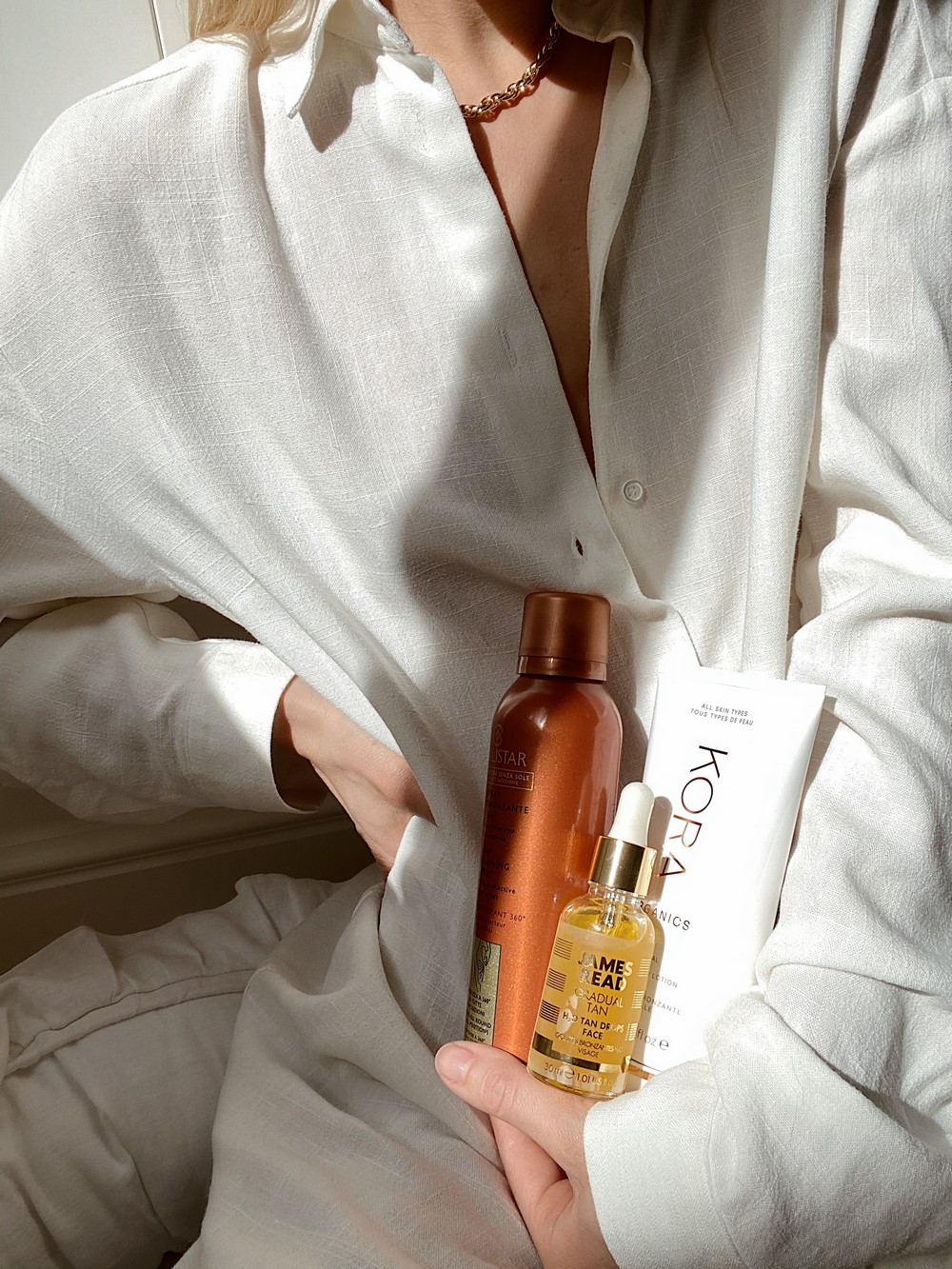 Mała aktualizacja samoopalaczy. Wiele z Was prosiło o takie zestawienie – mam nadzieję, że nie obrazicie się, że podam je w telegraficznym skrócie. Obecnie używam tych trzech produktów (poniżej znajdziecie dokładniejsze opisy). Wszystkie te produkty kupiłam w
Mała aktualizacja samoopalaczy. Wiele z Was prosiło o takie zestawienie – mam nadzieję, że nie obrazicie się, że podam je w telegraficznym skrócie. Obecnie używam tych trzech produktów (poniżej znajdziecie dokładniejsze opisy). Wszystkie te produkty kupiłam w 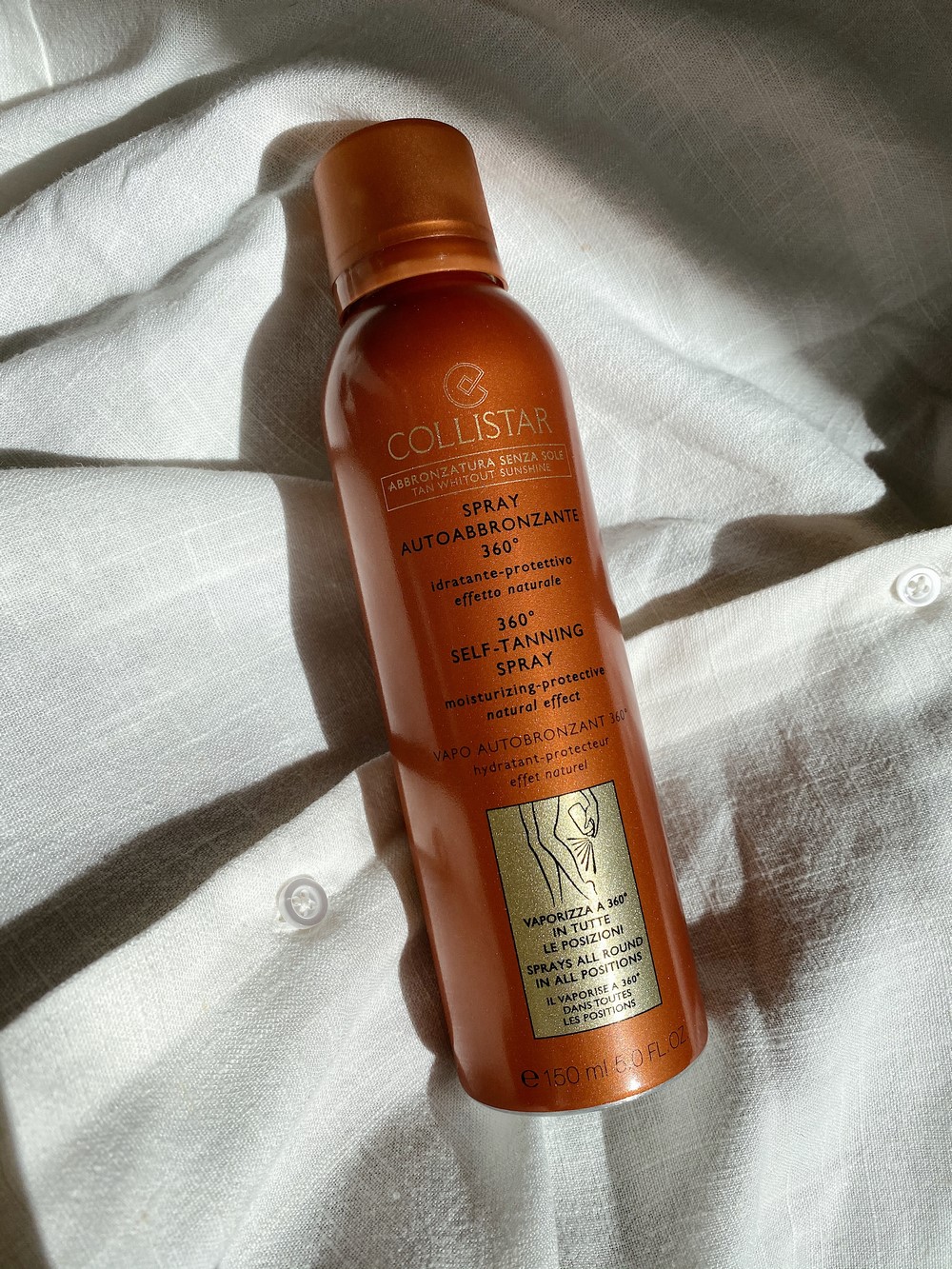

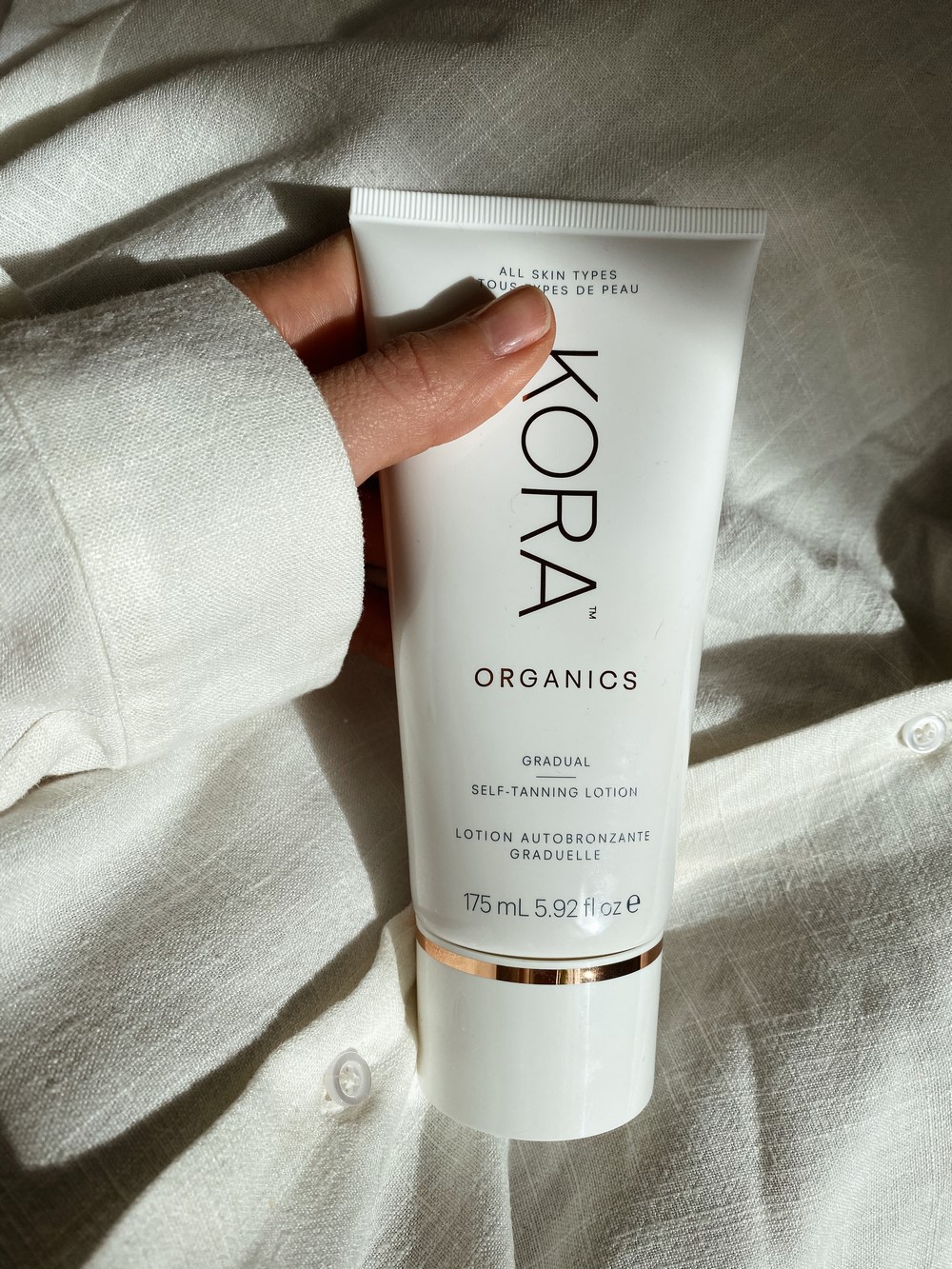
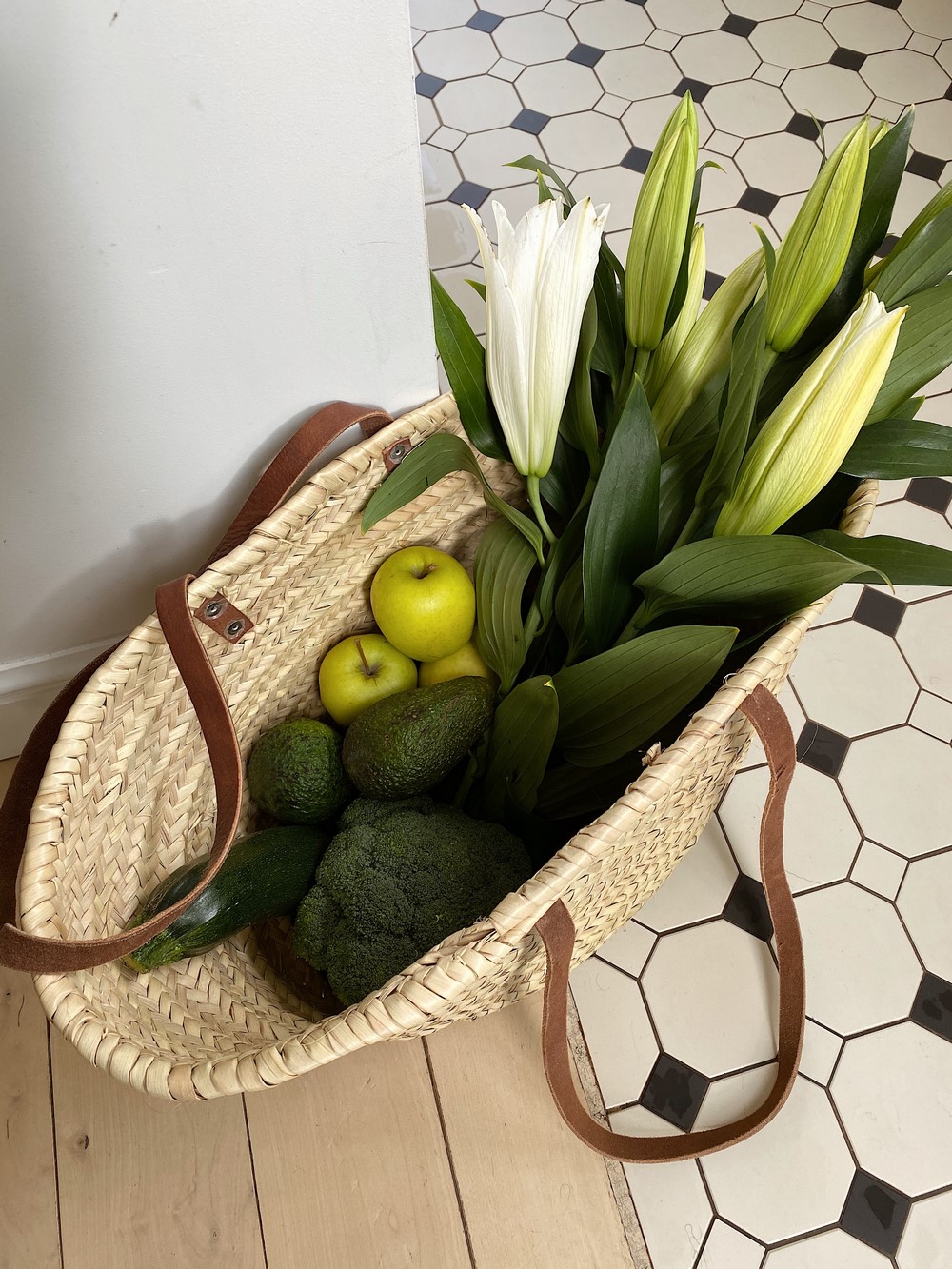 Zakupy.
Zakupy.  Miał być wypad na kaszuby i opalanie na leżakach, była ulewa i mokre buty.
Miał być wypad na kaszuby i opalanie na leżakach, była ulewa i mokre buty. Ktoś tu miał imieninową kolację.
Ktoś tu miał imieninową kolację.  bezglutenowe płatki owsiane, truskawki i syrop klonowy. Jogurt oddałam córeczce.
bezglutenowe płatki owsiane, truskawki i syrop klonowy. Jogurt oddałam córeczce. 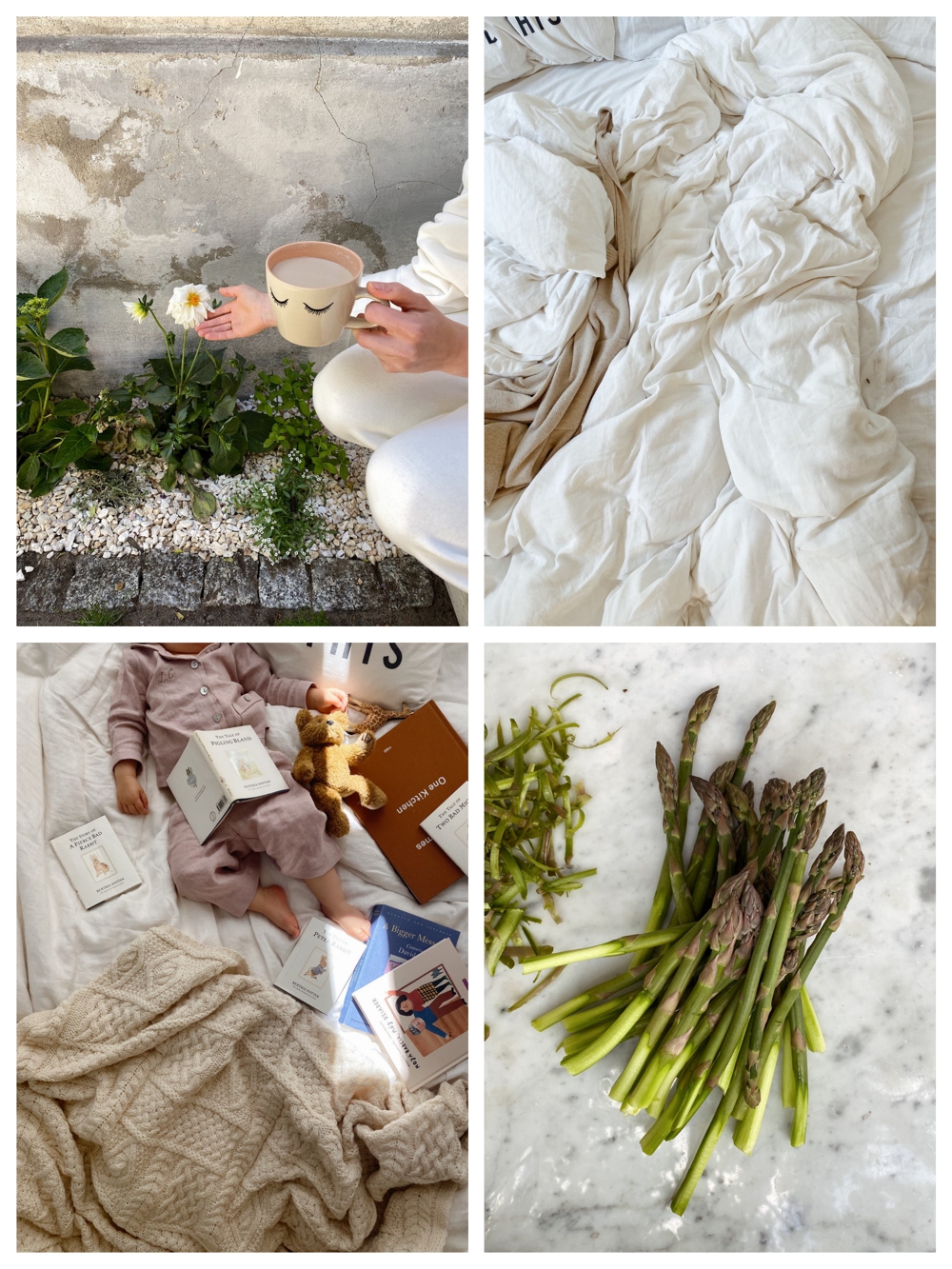 1. Kawa w ogrodzie smakuje lepiej. // 2. Kocham to miejsce! // 3. Po tak intensywnej lekturze czas na chwilę odpoczynku. Mój piękny koc znalazłam w Iconic Design w Gdańsku. // 4. Sezon na szparagi rozpoczęty! //
1. Kawa w ogrodzie smakuje lepiej. // 2. Kocham to miejsce! // 3. Po tak intensywnej lekturze czas na chwilę odpoczynku. Mój piękny koc znalazłam w Iconic Design w Gdańsku. // 4. Sezon na szparagi rozpoczęty! // A jak Wy wyglądacie, gdy obudzą Was w sobotę o szóstej rano? Uprzedzając pytania o dresik – nie, to niestety nie jest MLE. Wiem, że już od kilku miesięcy obiecywałam Wam coś podobnego, ale końca poszukiwań odpowiedniego materiału nie widać. Z czystym sumieniem mogę jednak podrzucić tu link do podobnego zestawu od marki, która ma moje zaufanie.
A jak Wy wyglądacie, gdy obudzą Was w sobotę o szóstej rano? Uprzedzając pytania o dresik – nie, to niestety nie jest MLE. Wiem, że już od kilku miesięcy obiecywałam Wam coś podobnego, ale końca poszukiwań odpowiedniego materiału nie widać. Z czystym sumieniem mogę jednak podrzucić tu link do podobnego zestawu od marki, która ma moje zaufanie. 
 1. To był długi deszczowy dzień. Herbata i miód pomogły. // 2. Hamak i książka. // 3. Kocham resztki z zamrażalnika. // 4. Praca nad zdjęciami produktowymi. //
1. To był długi deszczowy dzień. Herbata i miód pomogły. // 2. Hamak i książka. // 3. Kocham resztki z zamrażalnika. // 4. Praca nad zdjęciami produktowymi. // My też! Życzę powodzenia całej gastronomii!
My też! Życzę powodzenia całej gastronomii! 1. Zestaw mydełek od Bebe Concept. // 2. Kolejna miseczkowa wariacja. // 3. Strój z tego wpisu możecie zobaczyć
1. Zestaw mydełek od Bebe Concept. // 2. Kolejna miseczkowa wariacja. // 3. Strój z tego wpisu możecie zobaczyć  Czym byłaby majowa relacja bez rzepaku?
Czym byłaby majowa relacja bez rzepaku? Paryż, październik 2018 roku. Przy stoliku siedziały już trzy pokolenia kobiet (bo ktoś rósł w brzuchu). Dziękuję, że całe życie pokazywałaś mi jak być najlepszą mamą na świecie.
Paryż, październik 2018 roku. Przy stoliku siedziały już trzy pokolenia kobiet (bo ktoś rósł w brzuchu). Dziękuję, że całe życie pokazywałaś mi jak być najlepszą mamą na świecie. 1. Już prawie wyprzedana, a dopiero co weszła do sprzedaży :). / 2. Truskawkowe niebo. // 3. "Mleczny" wianek. // 4. Nareszcie zaczynasz jakoś wyglądać! Dziękuję Pani Ewie z Pracowni Florystycznej Narcyz w Gdyni za wszystkie kwiaty i sadzonki! //
1. Już prawie wyprzedana, a dopiero co weszła do sprzedaży :). / 2. Truskawkowe niebo. // 3. "Mleczny" wianek. // 4. Nareszcie zaczynasz jakoś wyglądać! Dziękuję Pani Ewie z Pracowni Florystycznej Narcyz w Gdyni za wszystkie kwiaty i sadzonki! //
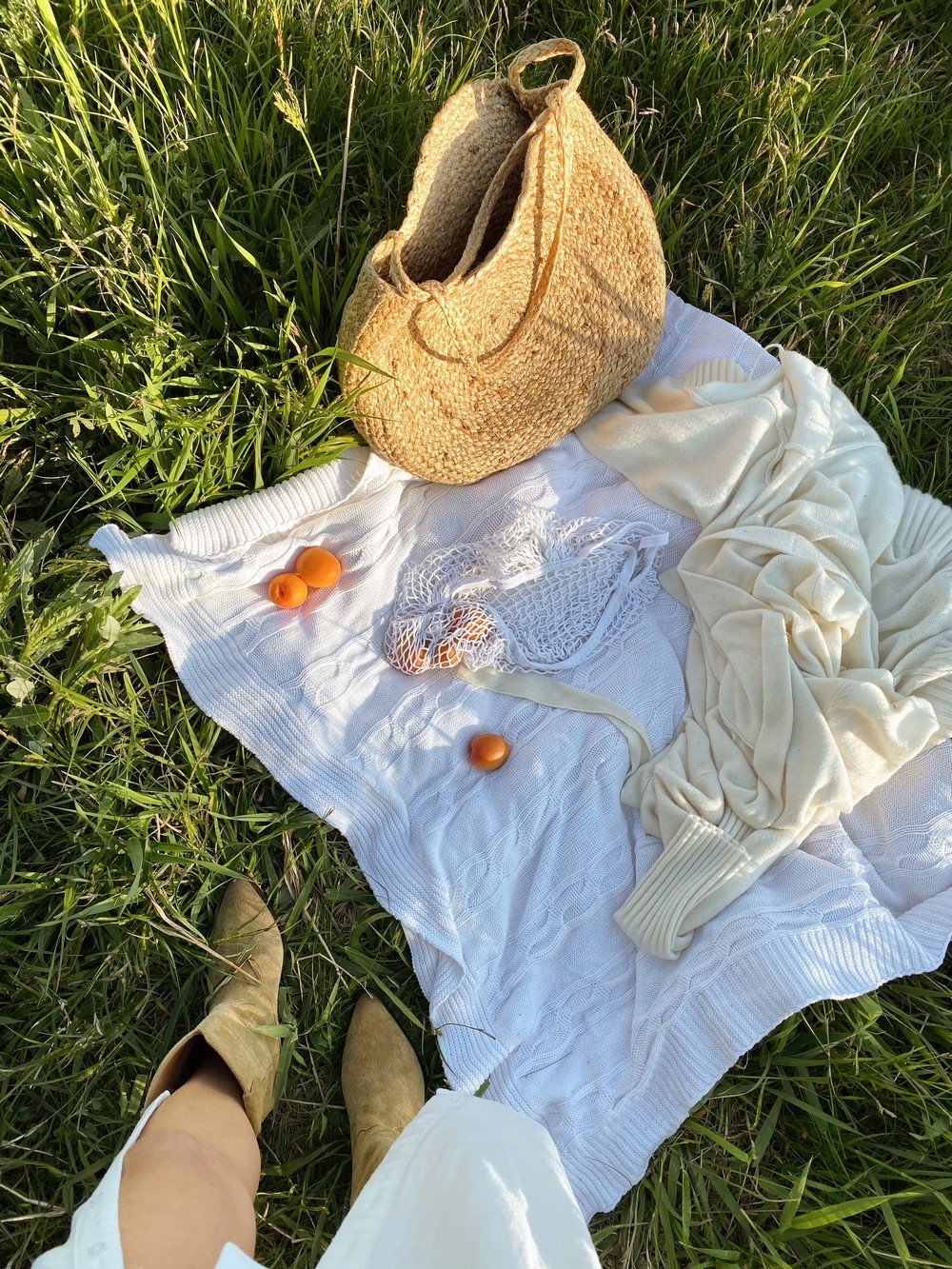 Kadr z ostatniego
Kadr z ostatniego 
 Wracamy do gry! (albo raczej do ćwiczenia serwisu)
Wracamy do gry! (albo raczej do ćwiczenia serwisu) Najbardziej cieszą kwiaty z własnego ogrodu. Bez już mi przekwita, ale przez kilka pięknych wieczorów jego zapach otulał nasze sny.
Najbardziej cieszą kwiaty z własnego ogrodu. Bez już mi przekwita, ale przez kilka pięknych wieczorów jego zapach otulał nasze sny. 


















 Nasze ogrodowe poczynania, czyli obdrapane kolana, hamak i szum liści. Mogłabym mieszkać w Bullerbyn.
Nasze ogrodowe poczynania, czyli obdrapane kolana, hamak i szum liści. Mogłabym mieszkać w Bullerbyn. 1. Widok który budzi mnie każdego poranka. Z dnia na dzień coraz więcej zieleni. // 2.
1. Widok który budzi mnie każdego poranka. Z dnia na dzień coraz więcej zieleni. // 2.  Nasi goście. To nie były typowe Święta Wielkanocne, ale na szczęście w dobie internetu mogliśmy wirtualnie spędzić wspólnie czas przy stole.
Nasi goście. To nie były typowe Święta Wielkanocne, ale na szczęście w dobie internetu mogliśmy wirtualnie spędzić wspólnie czas przy stole.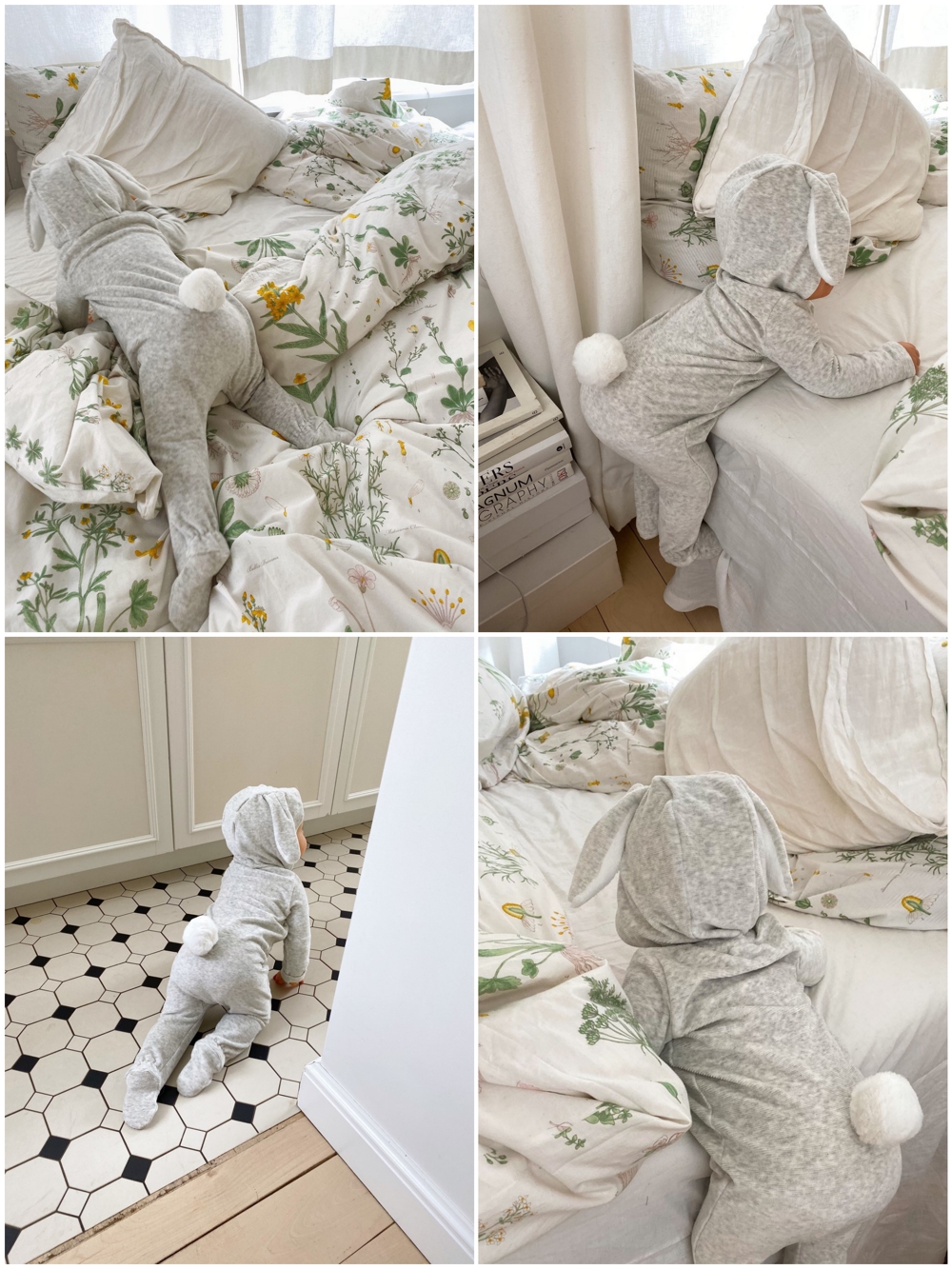 Gdy nie zamkniesz na noc drzwi do ogrodu i rano orientujesz się, że po mieszkaniu kica jakiś słodki gryzoń.
Gdy nie zamkniesz na noc drzwi do ogrodu i rano orientujesz się, że po mieszkaniu kica jakiś słodki gryzoń.

 1. Pierwsze wiosenne spacery – nigdy tak nie doceniałam wiosny jak podczas tych krótkich wyjść. Tu jeszcze przed wprowadzeniem nakazu noszenia maseczek. // 2. To chyba mój ulubiony model, chociaż ciężko mi się zdecydować (uprzedzę Wasze pytania – to model
1. Pierwsze wiosenne spacery – nigdy tak nie doceniałam wiosny jak podczas tych krótkich wyjść. Tu jeszcze przed wprowadzeniem nakazu noszenia maseczek. // 2. To chyba mój ulubiony model, chociaż ciężko mi się zdecydować (uprzedzę Wasze pytania – to model 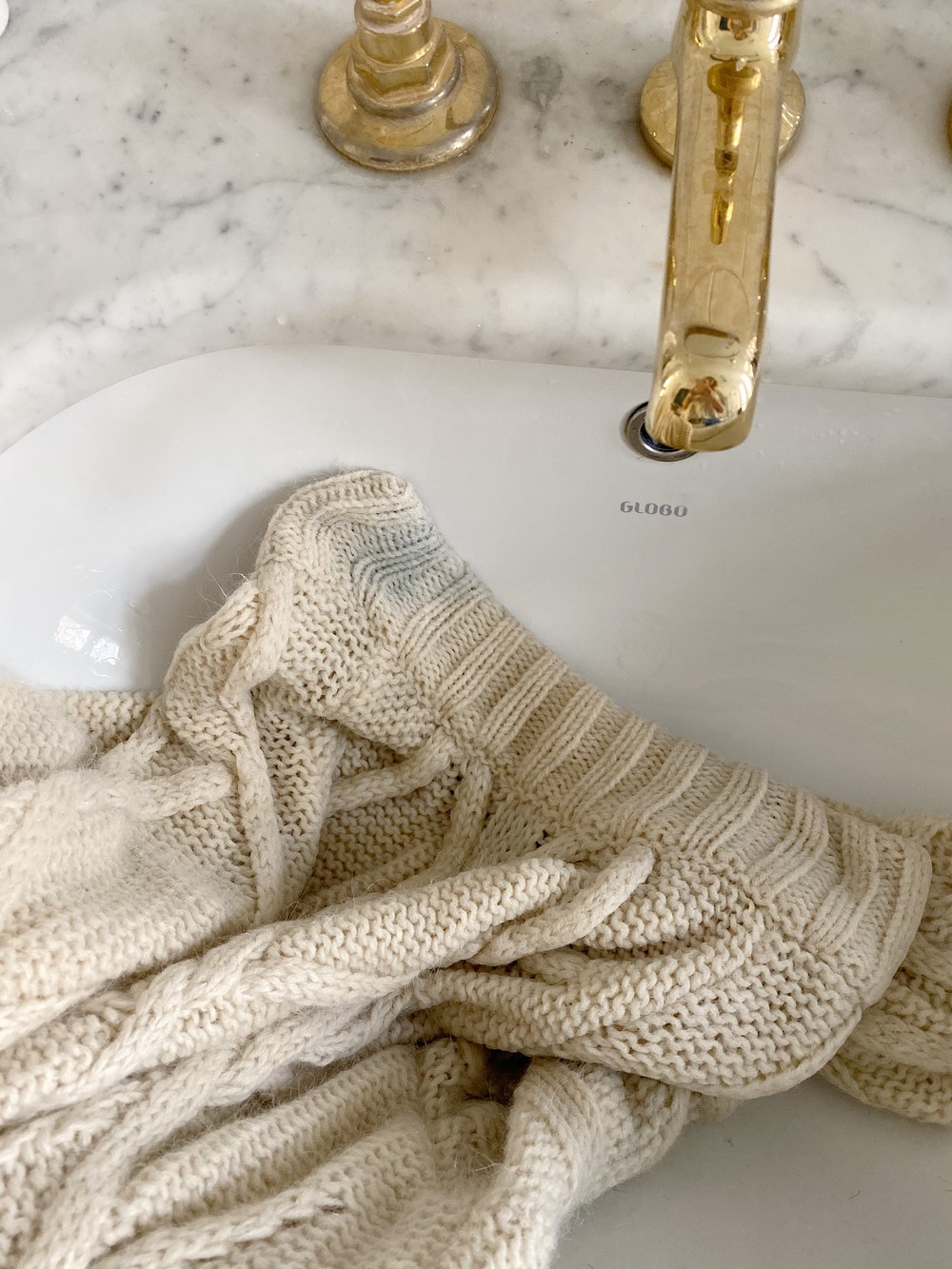 A oto dowód zbrodni. Z uwagi na epidemię nie oddaję rzeczy do pralni. Chciałam wyprać w pralce mój ukochany sweter z MLE Collection sprzed dwóch sezonów, bo już raz uszło mi to na sucho. Niestety, bęben zafarbował sweter na niebiesko. Mimo wielu prób plamy nie udało się wywabić. Jakieś pomysły?
A oto dowód zbrodni. Z uwagi na epidemię nie oddaję rzeczy do pralni. Chciałam wyprać w pralce mój ukochany sweter z MLE Collection sprzed dwóch sezonów, bo już raz uszło mi to na sucho. Niestety, bęben zafarbował sweter na niebiesko. Mimo wielu prób plamy nie udało się wywabić. Jakieś pomysły? Tak. Znów leżę w łóżku.
Tak. Znów leżę w łóżku.  1. Cały ten "look" zobaczycie
1. Cały ten "look" zobaczycie  Nie takie ładne i popularne jak bakłażany i egzotyczne awokado. Warzywa korzeniowe. Ostatnio podstawa naszej diety, bo staramy się jeść to, co rośnie lokalnie.
Nie takie ładne i popularne jak bakłażany i egzotyczne awokado. Warzywa korzeniowe. Ostatnio podstawa naszej diety, bo staramy się jeść to, co rośnie lokalnie.  Najpiękniejsza kreacja na domową randkę jaką miałam. Dziękuję
Najpiękniejsza kreacja na domową randkę jaką miałam. Dziękuję  1. Sukienka z poprzedniego zdjęcia z innego ujęcia. Jeśli ktoś z Was ma zacięcie krawieckie na pewno bardzo doceni fakt, że
1. Sukienka z poprzedniego zdjęcia z innego ujęcia. Jeśli ktoś z Was ma zacięcie krawieckie na pewno bardzo doceni fakt, że 
 Słońce wyszło i atakuje zakurzone półki. Mamy dobrą wymówkę aby odpuścić sobie w tym roku wiosenne porządki, ale z niej nie skorzystamy. Chyba.
Słońce wyszło i atakuje zakurzone półki. Mamy dobrą wymówkę aby odpuścić sobie w tym roku wiosenne porządki, ale z niej nie skorzystamy. Chyba. Jestem za utrzymaniem obowiązującego kompromisu.
Jestem za utrzymaniem obowiązującego kompromisu.  Sweter, w którym uwielbiam chodzić po domu (i bardzo podoba się też mężowi) i w którym mogłam też pójść na imprezę (w czasach gdy było to dozwolone :D). Zostało nam kilkanaście sztuk
Sweter, w którym uwielbiam chodzić po domu (i bardzo podoba się też mężowi) i w którym mogłam też pójść na imprezę (w czasach gdy było to dozwolone :D). Zostało nam kilkanaście sztuk 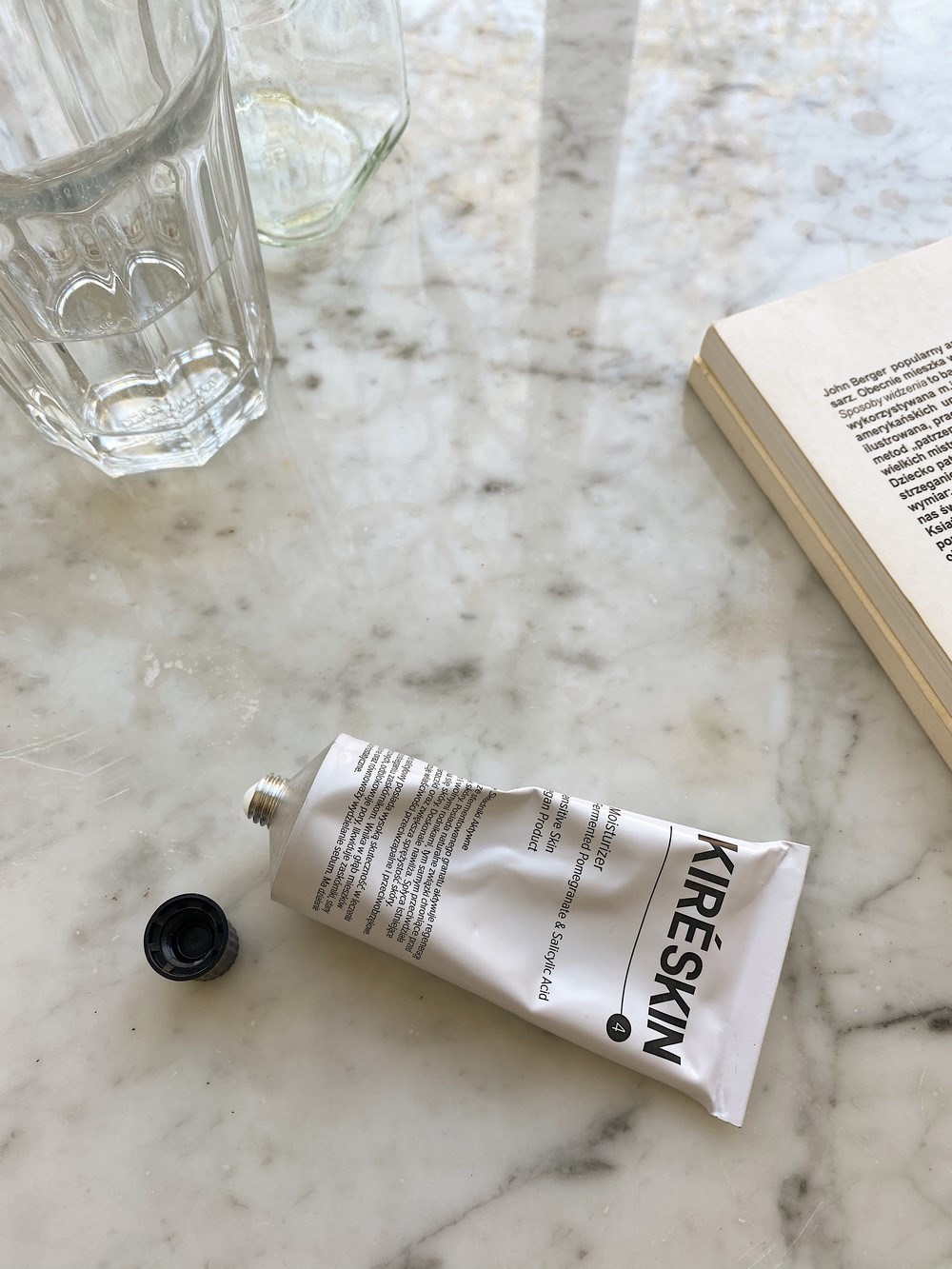 Krem od
Krem od  Weekendowe leniuchowanie.
Weekendowe leniuchowanie.  Wichura za oknem. Wiosna na stole. Gdy na zewnątrz jest brzydko trochę łatwiej udawać, że wcale nie chce nam się wychodzić.
Wichura za oknem. Wiosna na stole. Gdy na zewnątrz jest brzydko trochę łatwiej udawać, że wcale nie chce nam się wychodzić. 1. Czekamy, aby można w nich wychodzić! // 2. Lampa z listami do nieba. Ostatnio sporo na nią patrzę. Mieszkanie nie musi być nafaszerowane „dizajnerskimi” przedmiotami – wystarczy czasem jeden gadżet, aby wszystko wyglądało o klasę lepiej. Jeśli szukacie miejsca, gdzie można znaleźć prawdziwie ikony wzornictwa to polecam
1. Czekamy, aby można w nich wychodzić! // 2. Lampa z listami do nieba. Ostatnio sporo na nią patrzę. Mieszkanie nie musi być nafaszerowane „dizajnerskimi” przedmiotami – wystarczy czasem jeden gadżet, aby wszystko wyglądało o klasę lepiej. Jeśli szukacie miejsca, gdzie można znaleźć prawdziwie ikony wzornictwa to polecam 
 I gdy łapiesz się na tym, że zaczynasz jeść to samo co piętnastomiesięczny człowiek.
I gdy łapiesz się na tym, że zaczynasz jeść to samo co piętnastomiesięczny człowiek.  W trudnych czasach na ratunek przyszło nam
W trudnych czasach na ratunek przyszło nam  Herbata. Do tej pory piłam ją głównie z mamą, która jest jej wielką amatorką. Teraz nasze spotkania wyglądają inaczej. Albo wpadam do mamy do ogrodu, ona otwiera okno i tak sobie rozmawiamy, albo wybieramy się na spacer w maseczkach. Tęsknie za czasem, kiedy spędzałyśmy u mnie długie godziny, wspólnie cieszyłyśmy się z postępów jej wnuczki i nadrabiałyśmy tematy, które nagromadziły się w czasie jej nieobecności (moja mama spędzała większość czasu z tatą w Brukseli). Ze zdziwieniem widzę jednak, że chociaż mama mnie nie odwiedza, to ulubionej herbaty w puszce wciąż ubywa. Chyba jednak geny to potęga ;). To nie przypadek, że polecę Wam teraz herbatę od
Herbata. Do tej pory piłam ją głównie z mamą, która jest jej wielką amatorką. Teraz nasze spotkania wyglądają inaczej. Albo wpadam do mamy do ogrodu, ona otwiera okno i tak sobie rozmawiamy, albo wybieramy się na spacer w maseczkach. Tęsknie za czasem, kiedy spędzałyśmy u mnie długie godziny, wspólnie cieszyłyśmy się z postępów jej wnuczki i nadrabiałyśmy tematy, które nagromadziły się w czasie jej nieobecności (moja mama spędzała większość czasu z tatą w Brukseli). Ze zdziwieniem widzę jednak, że chociaż mama mnie nie odwiedza, to ulubionej herbaty w puszce wciąż ubywa. Chyba jednak geny to potęga ;). To nie przypadek, że polecę Wam teraz herbatę od  Nowości z MLE ciąg dalszy.
Nowości z MLE ciąg dalszy.  A to mała zapowiedź słodkiej paczki od
A to mała zapowiedź słodkiej paczki od 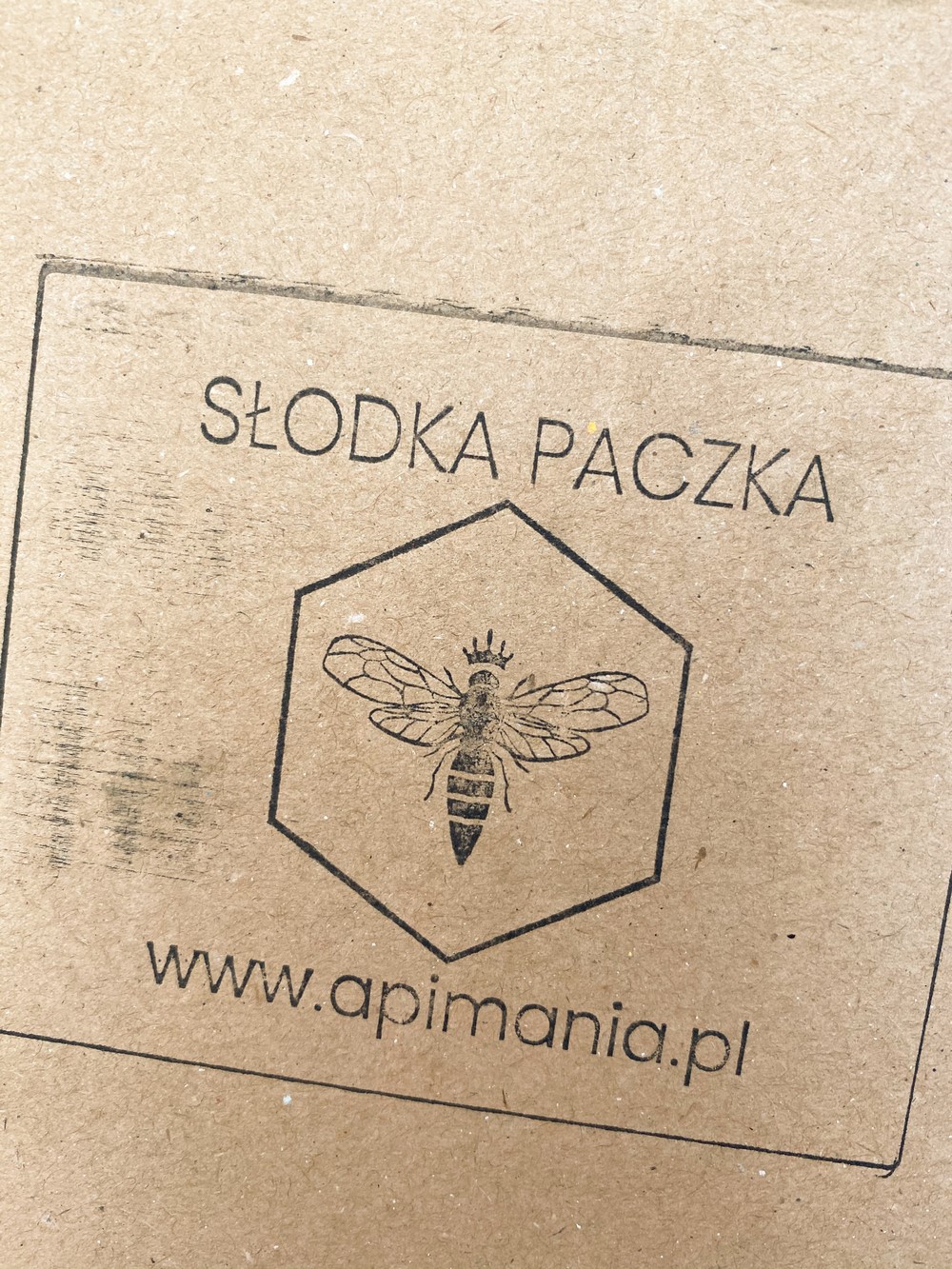 I oczywiście w paczkach z Apimanii nie ma grama plastiku.
I oczywiście w paczkach z Apimanii nie ma grama plastiku. Powrót na Kaszuby. Doceniamy teraz nasz letniskowy domek na odludziu jak nigdy wcześniej.
Powrót na Kaszuby. Doceniamy teraz nasz letniskowy domek na odludziu jak nigdy wcześniej.  1. Pierwsze promienie słońca na bladych nogach. // 2. Pomelo. Najstarszy cytrus na świecie. // 3. Kumkanie żab. // 4. Wiatr we włosach. //
1. Pierwsze promienie słońca na bladych nogach. // 2. Pomelo. Najstarszy cytrus na świecie. // 3. Kumkanie żab. // 4. Wiatr we włosach. // Portos umorusany błotem jest w swoim żywiole.
Portos umorusany błotem jest w swoim żywiole.  Nie wiem czy pamiętacie tego pana – to Dres. Sędziwy kocur, który w walce z lisem stracił tylną nóżkę. Dzielny weteran.
Nie wiem czy pamiętacie tego pana – to Dres. Sędziwy kocur, który w walce z lisem stracił tylną nóżkę. Dzielny weteran. 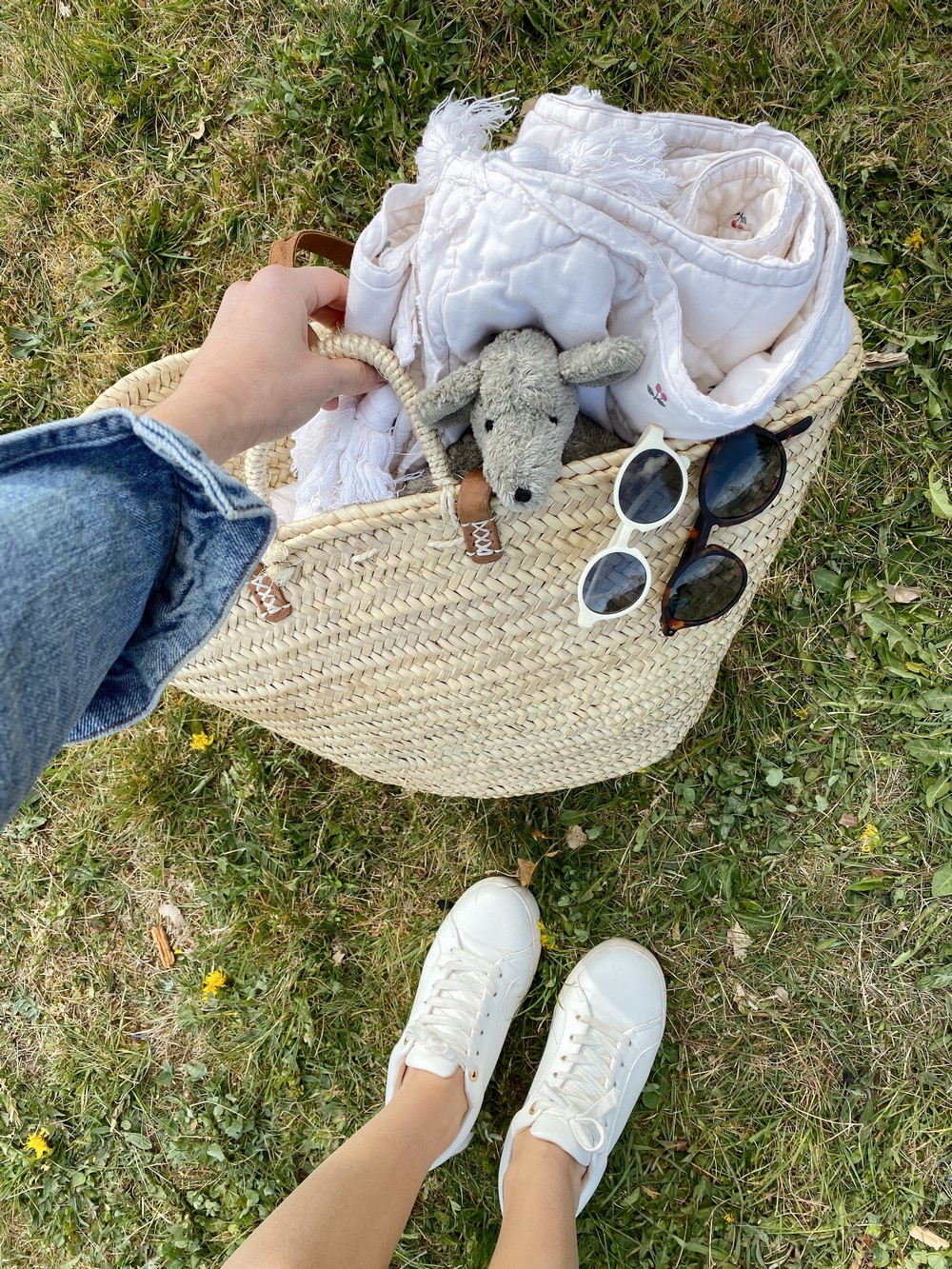 Nadchodzący czas ma być podobno rozkwitem mikroturystuki, czyli podróży nie dalszych niż 100 kilometrów od domu. Dla nas żaden problem – od zawsze kochamy kaszubskie pustkowia.
Nadchodzący czas ma być podobno rozkwitem mikroturystuki, czyli podróży nie dalszych niż 100 kilometrów od domu. Dla nas żaden problem – od zawsze kochamy kaszubskie pustkowia.


